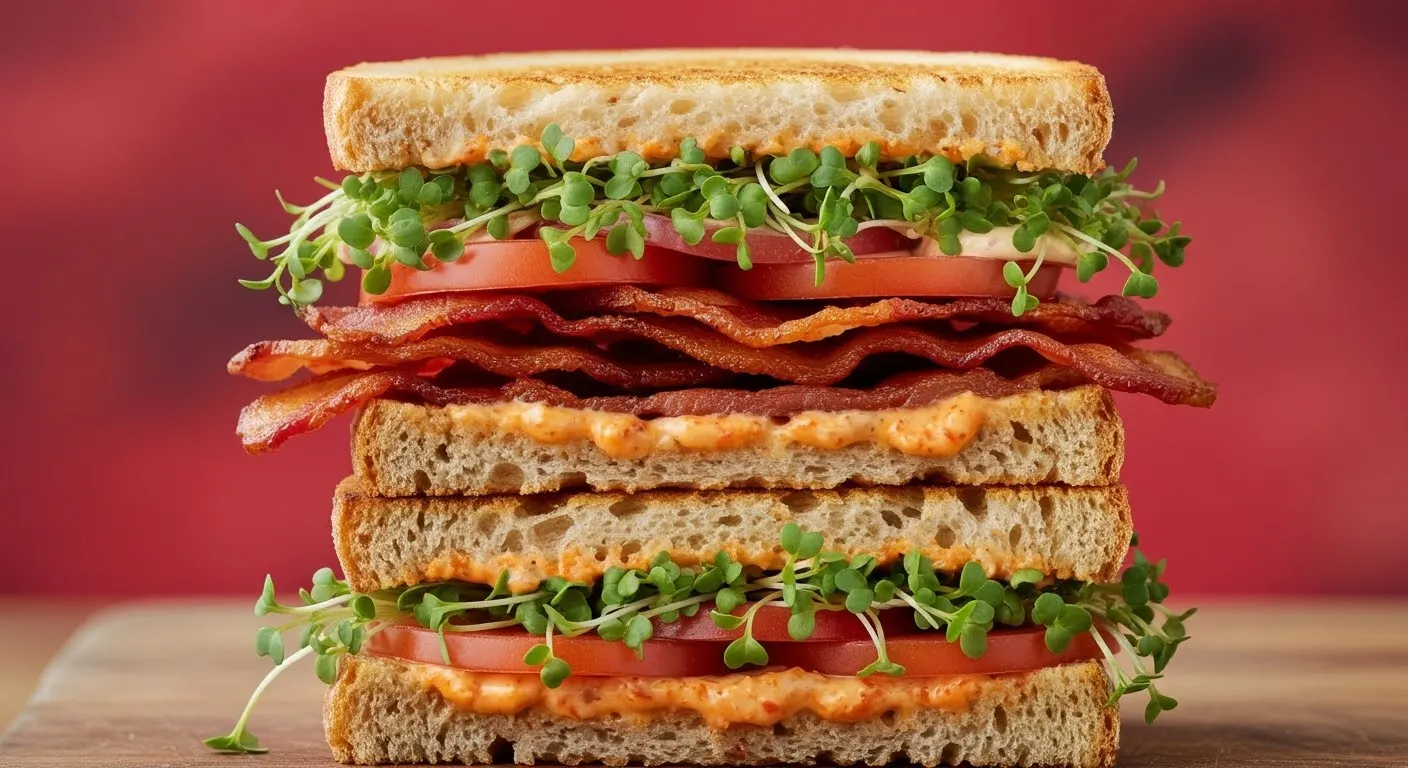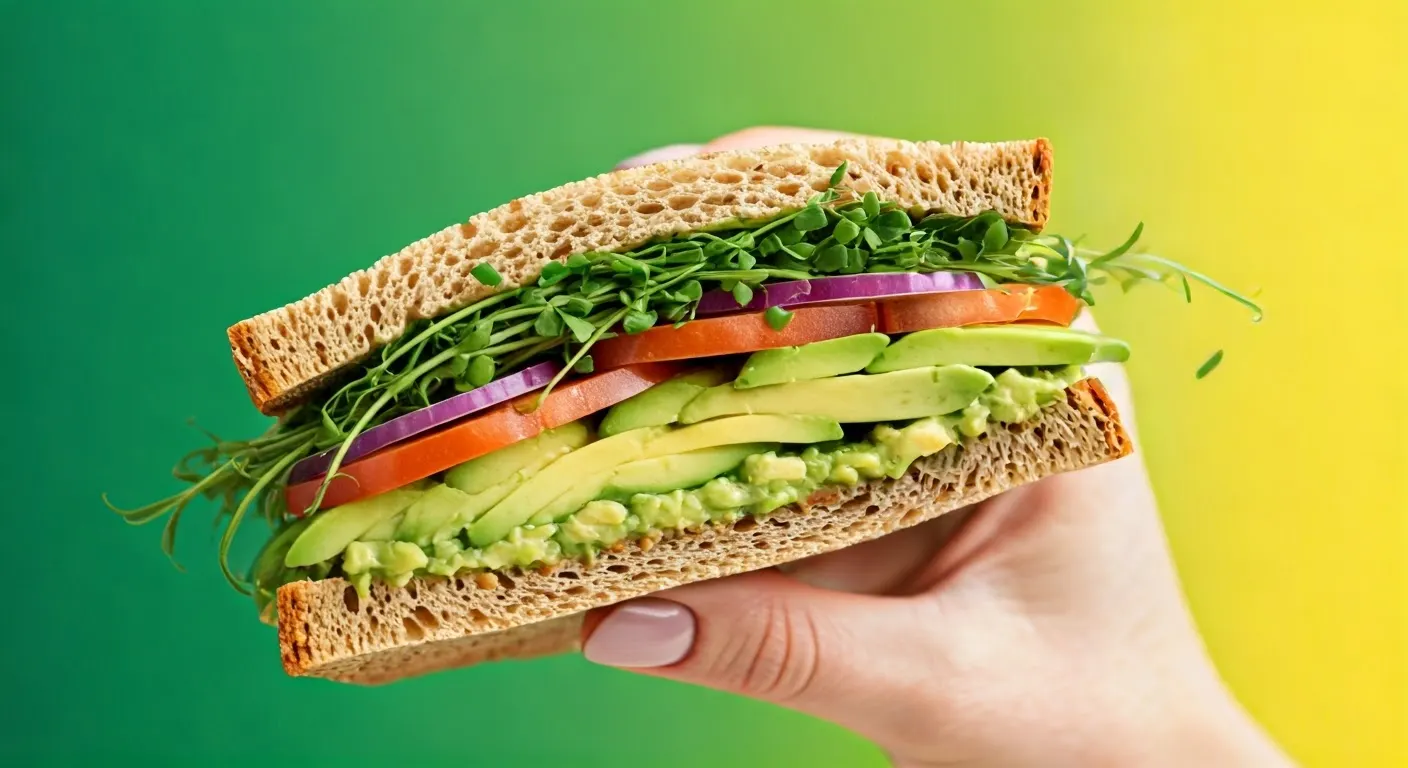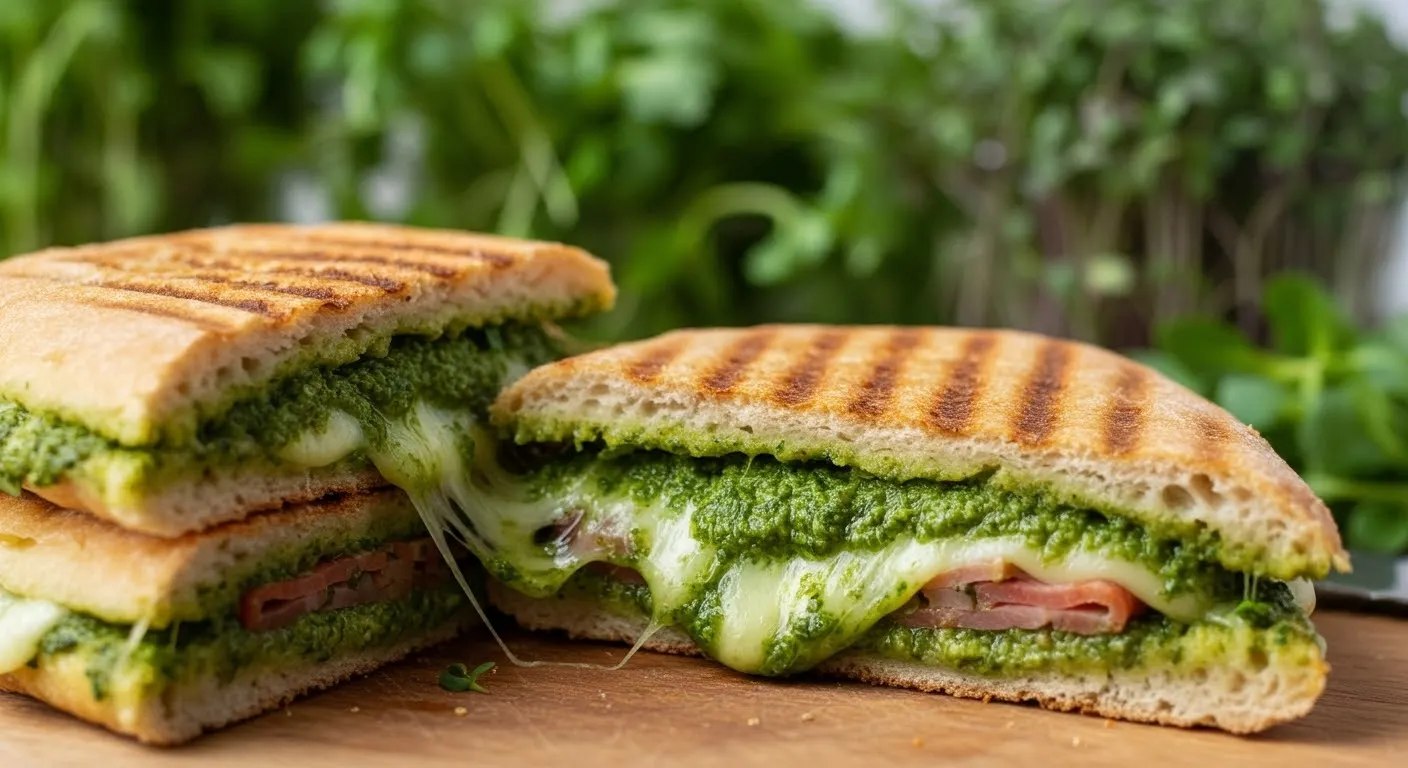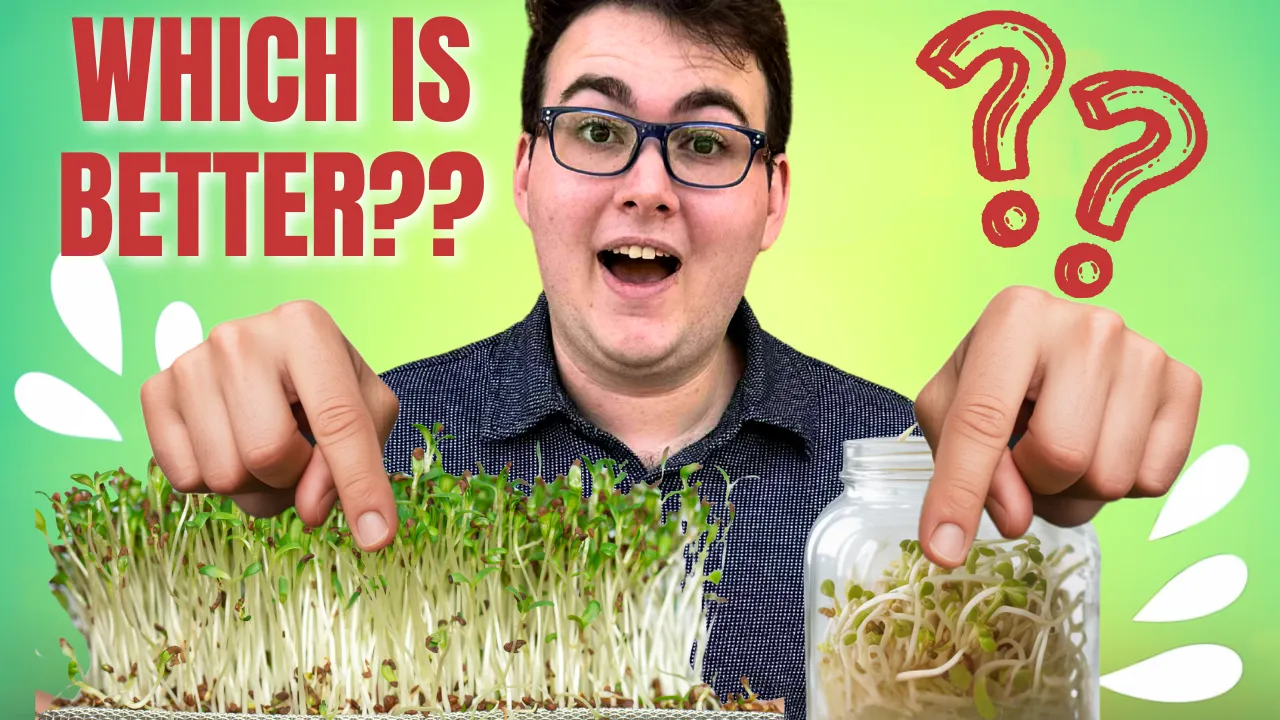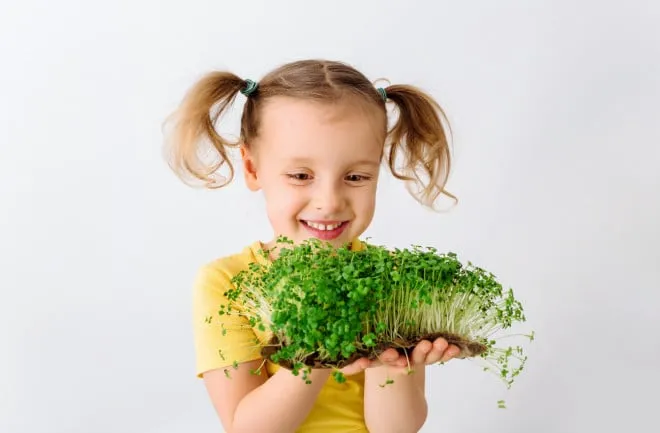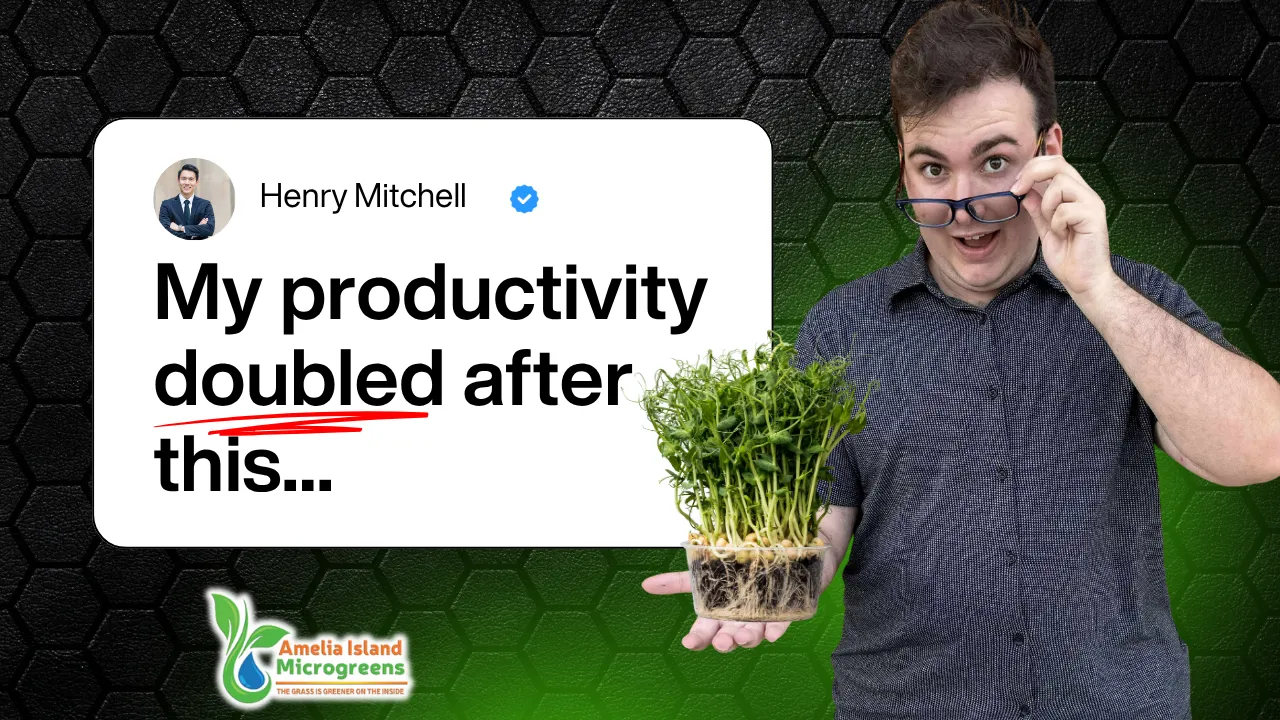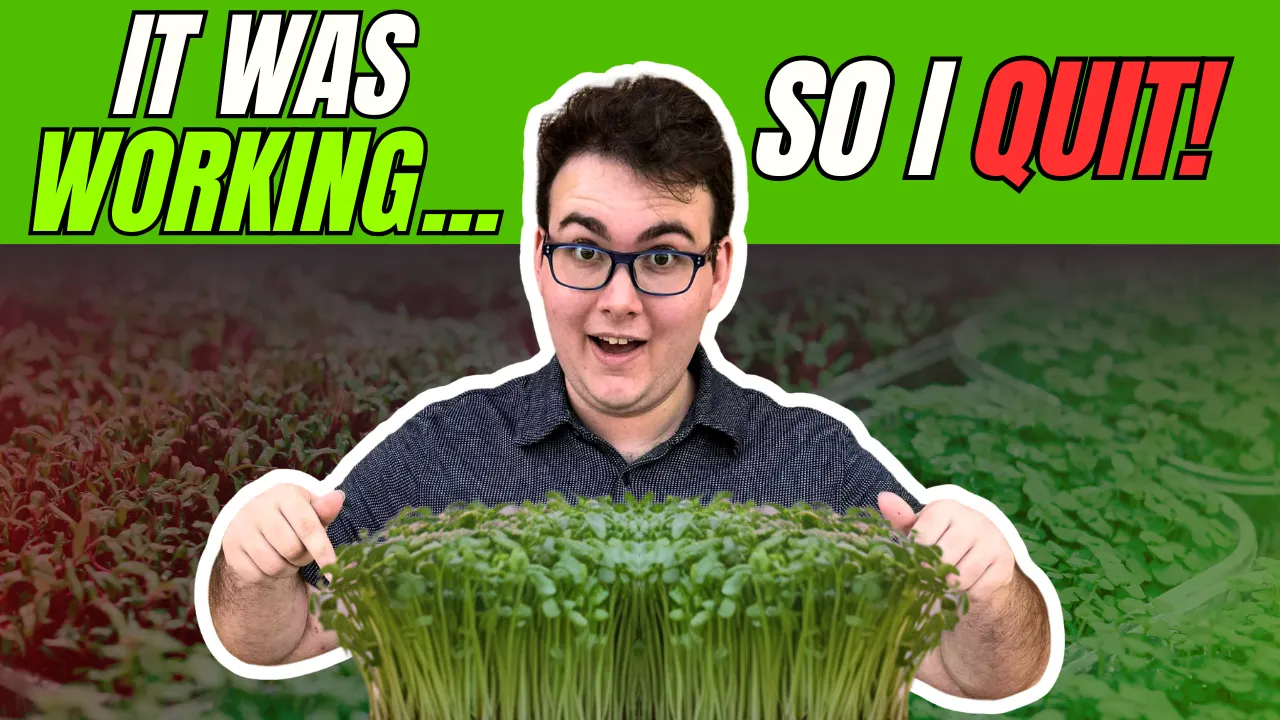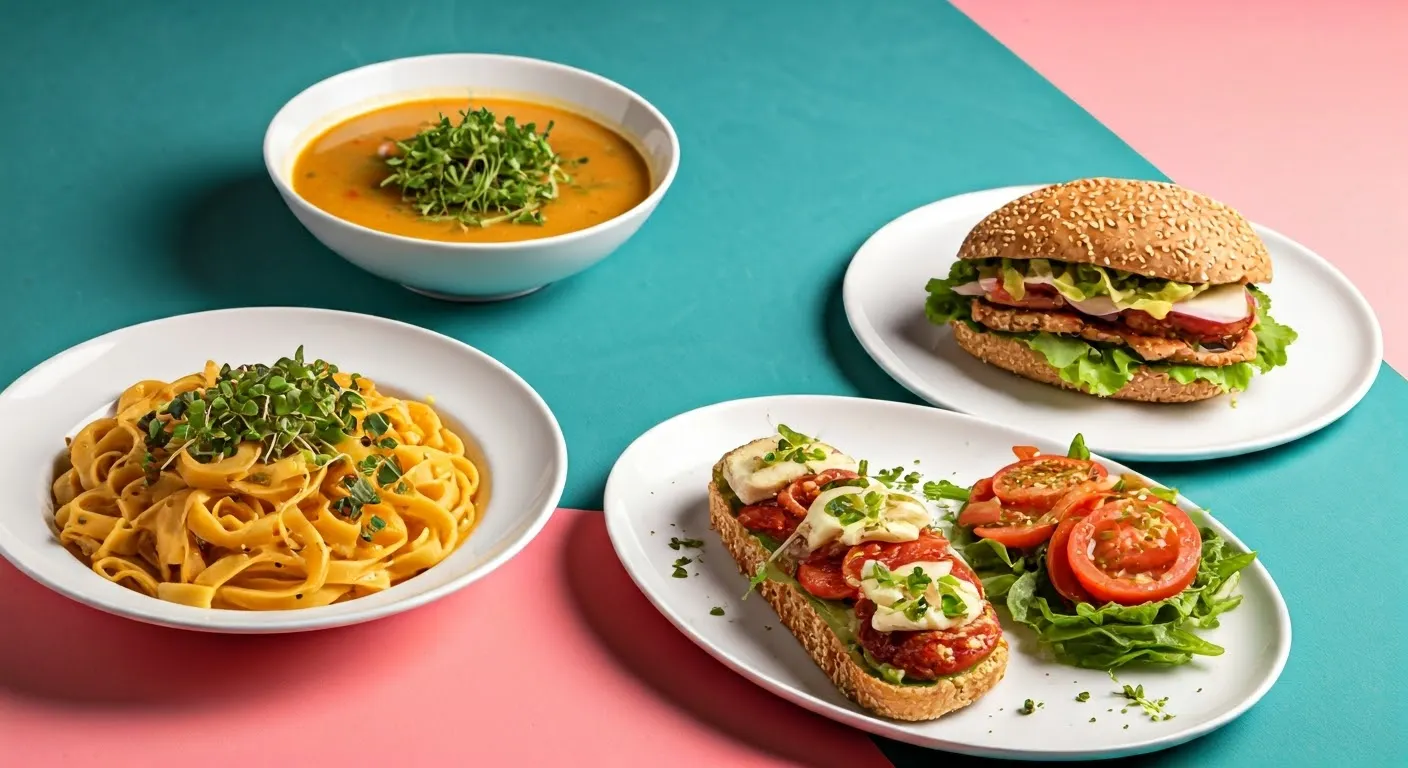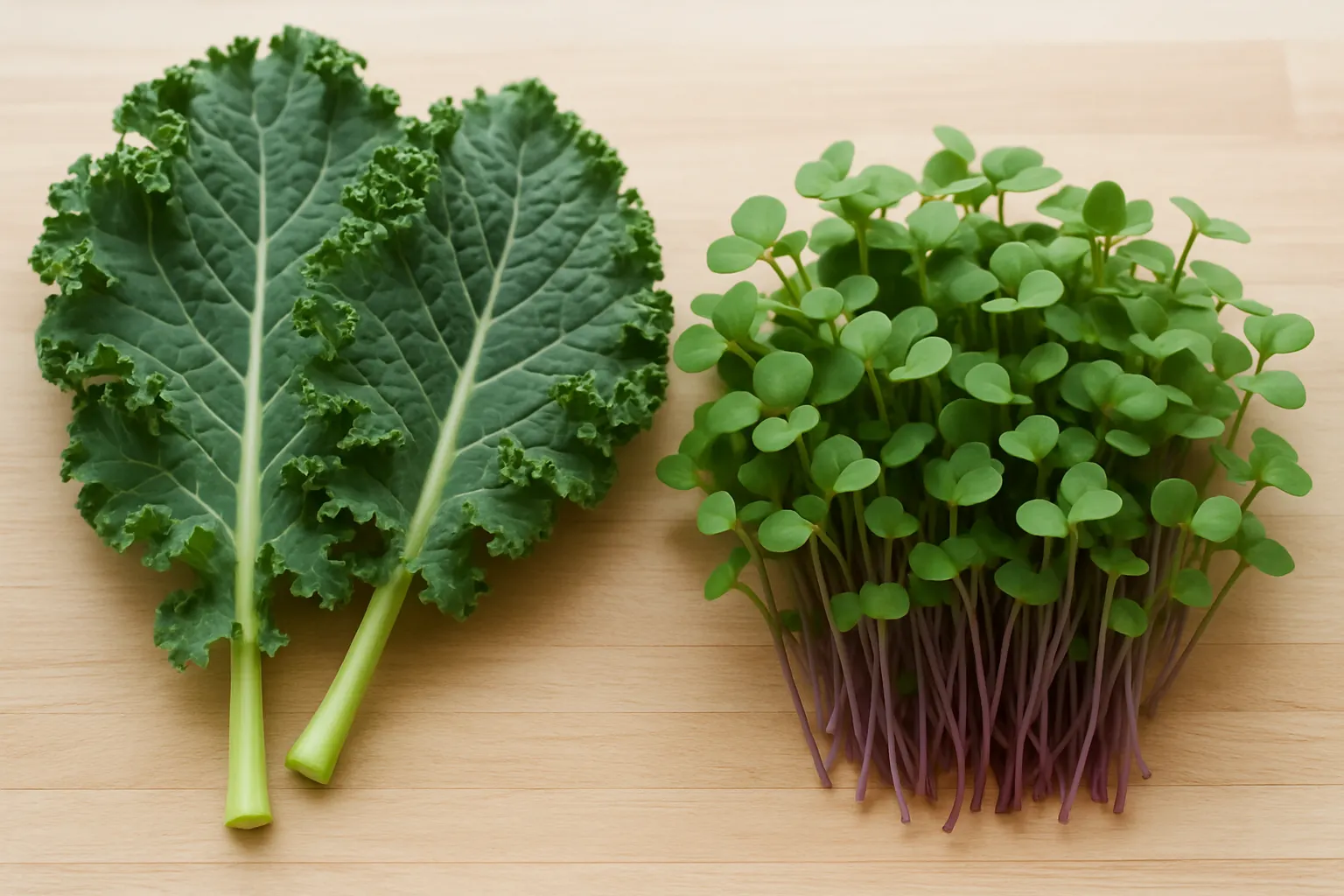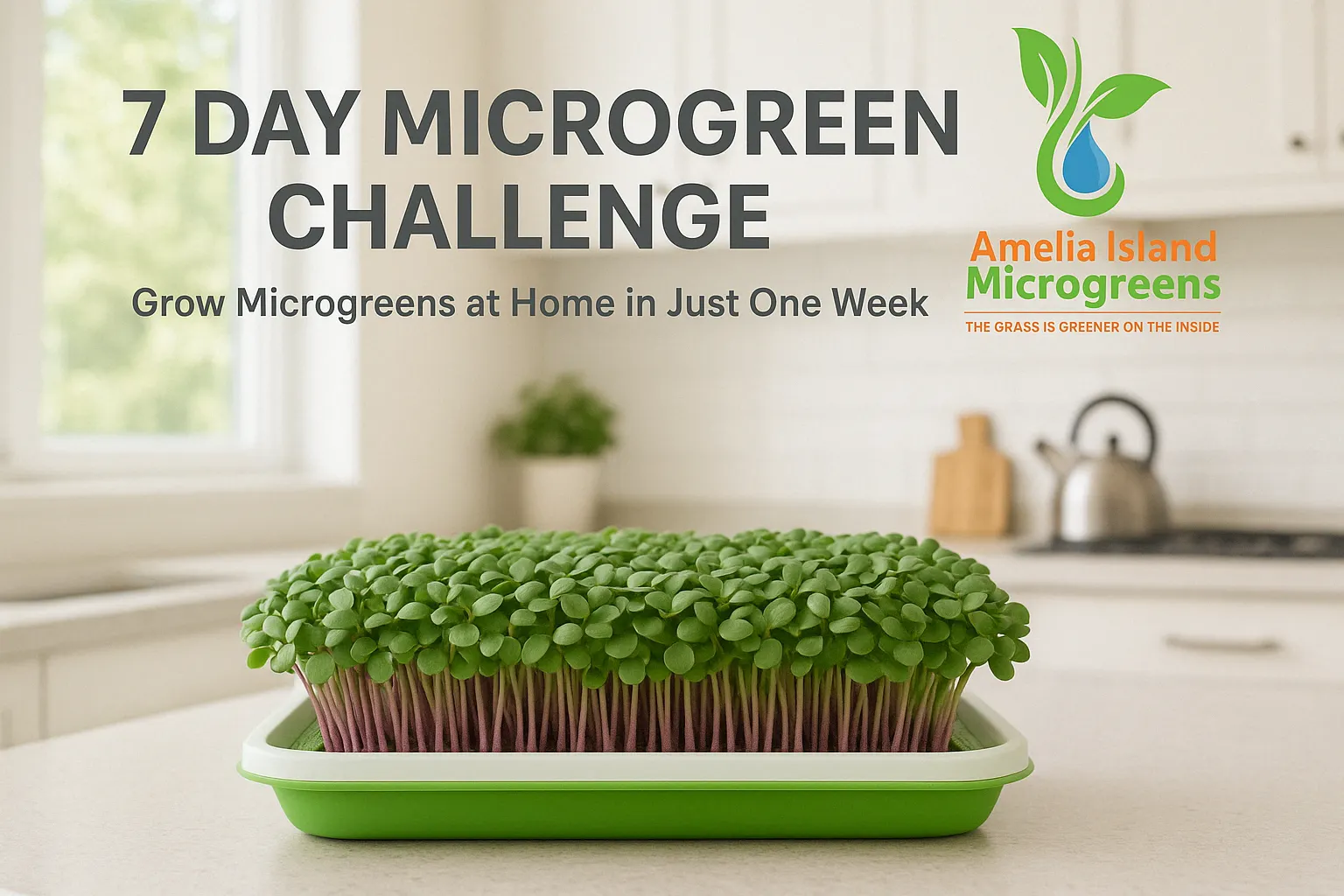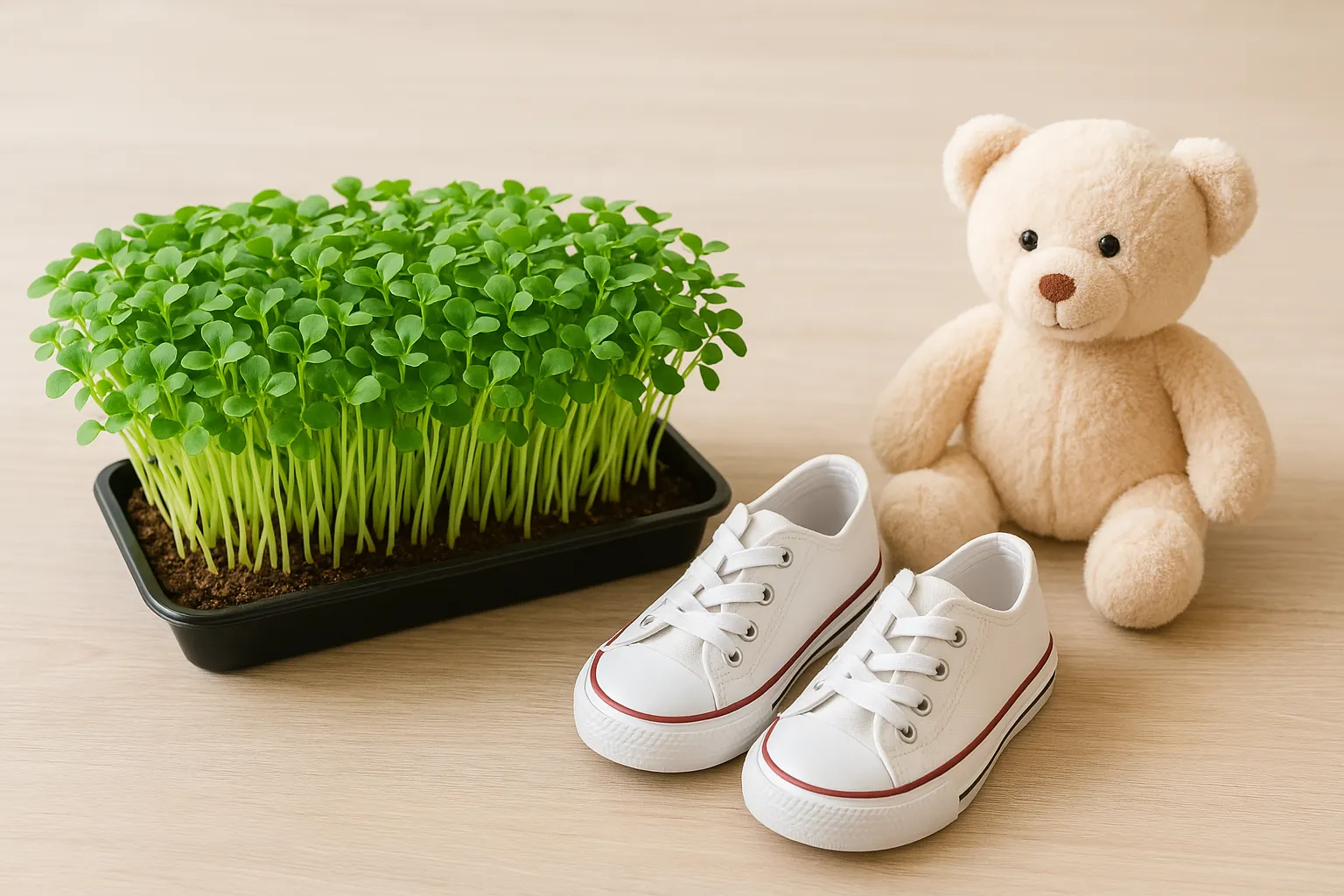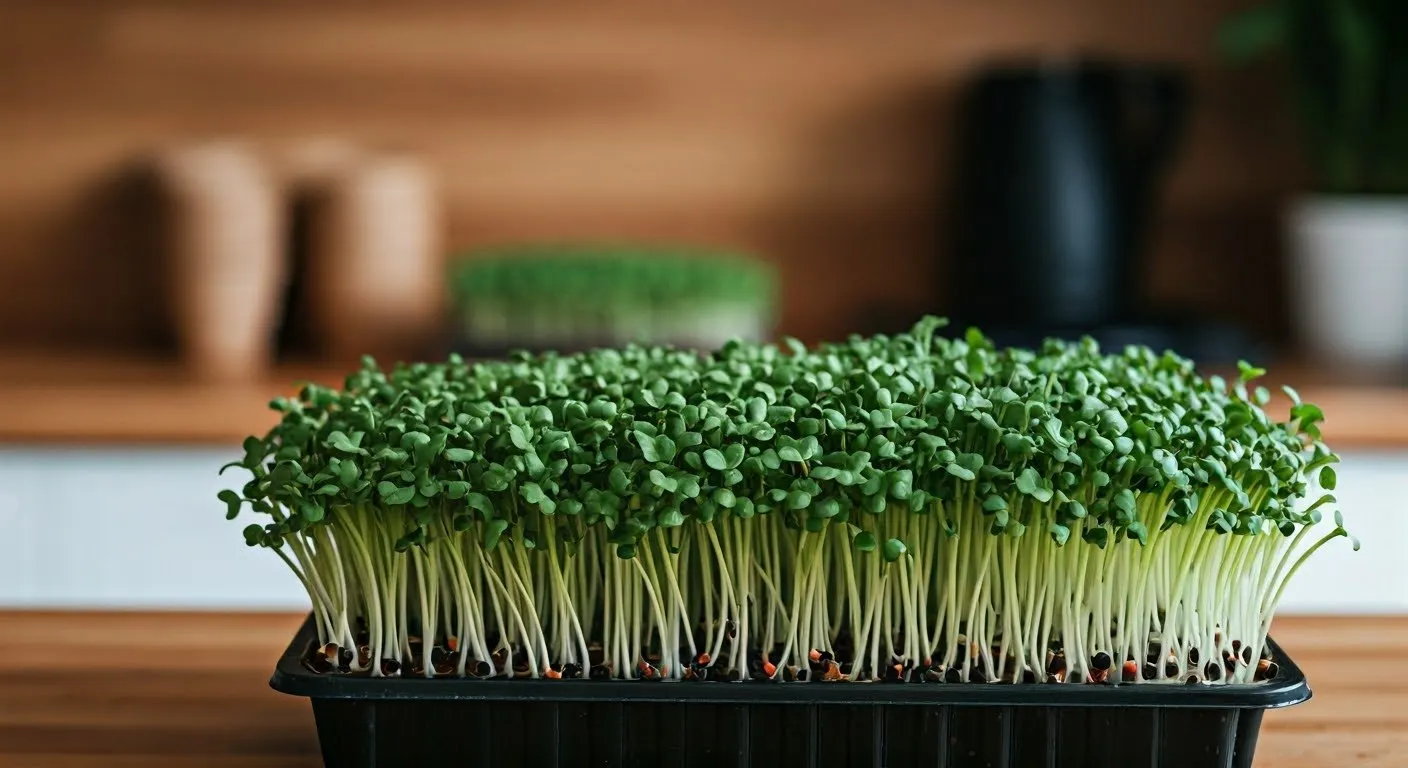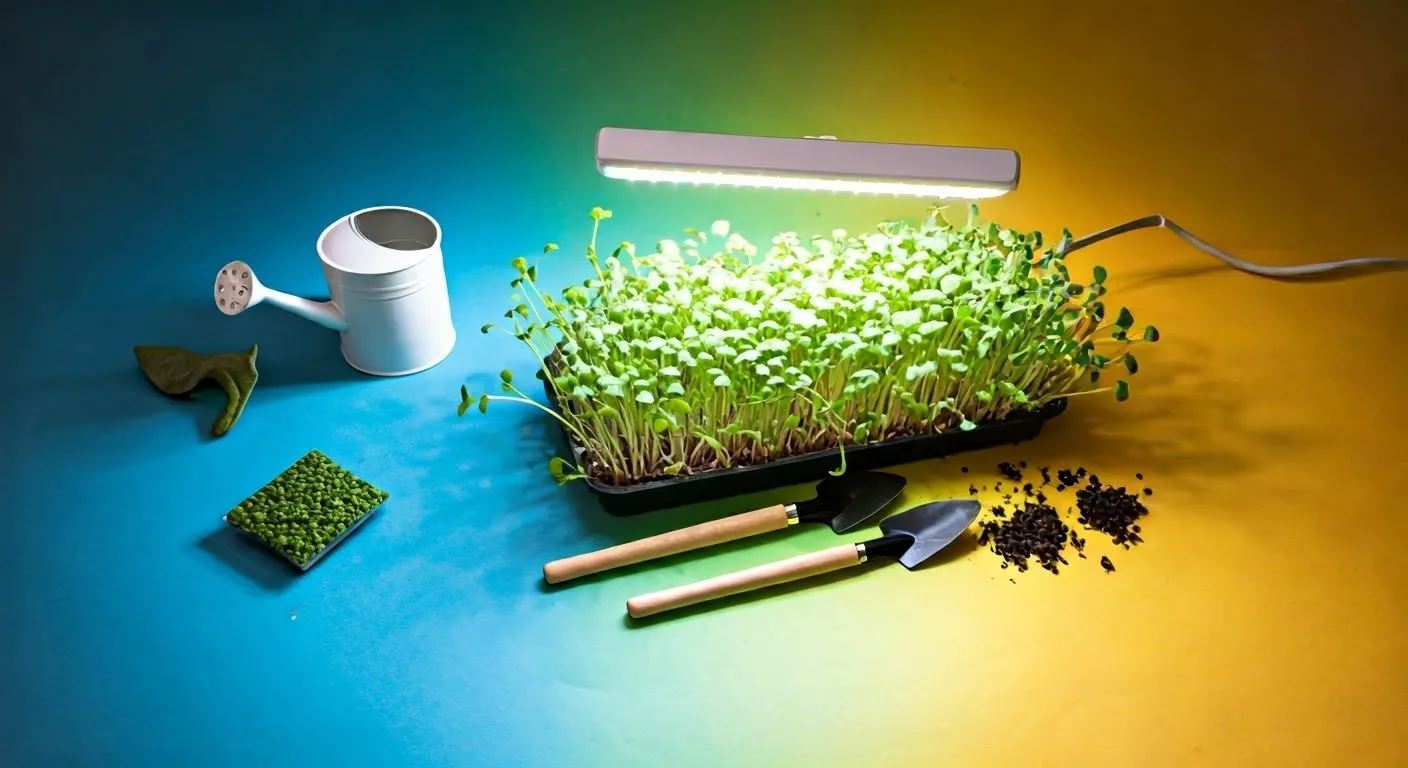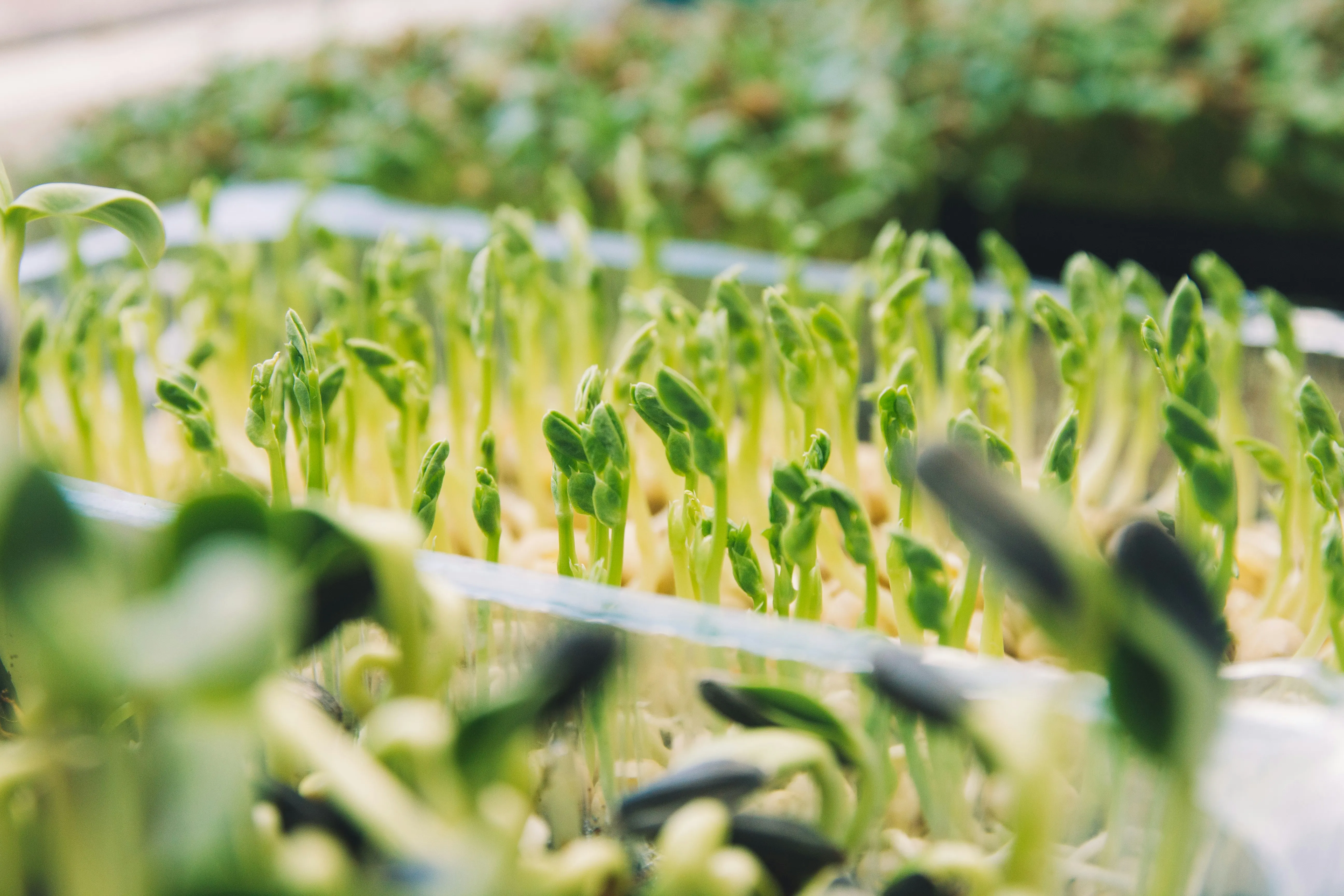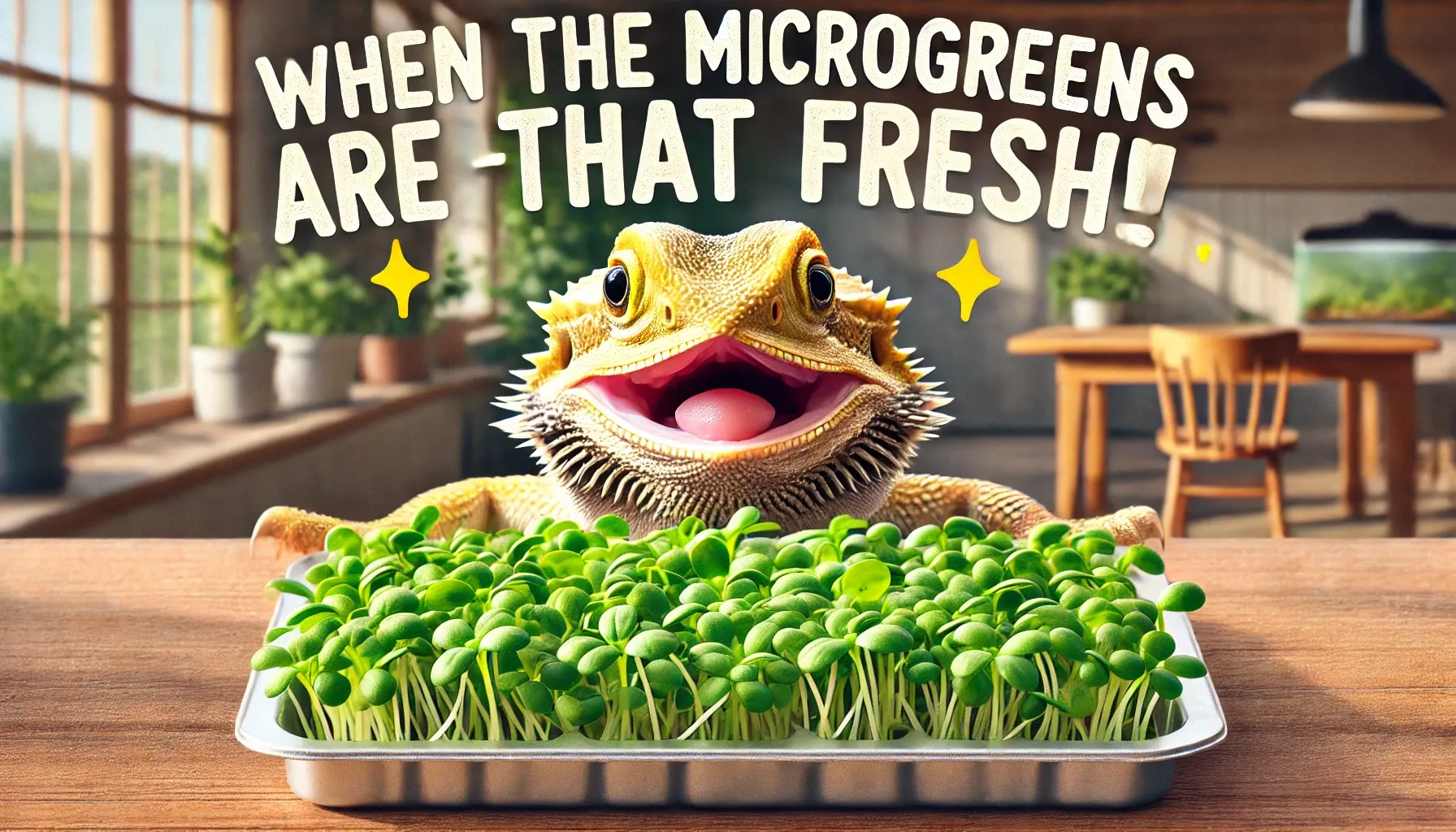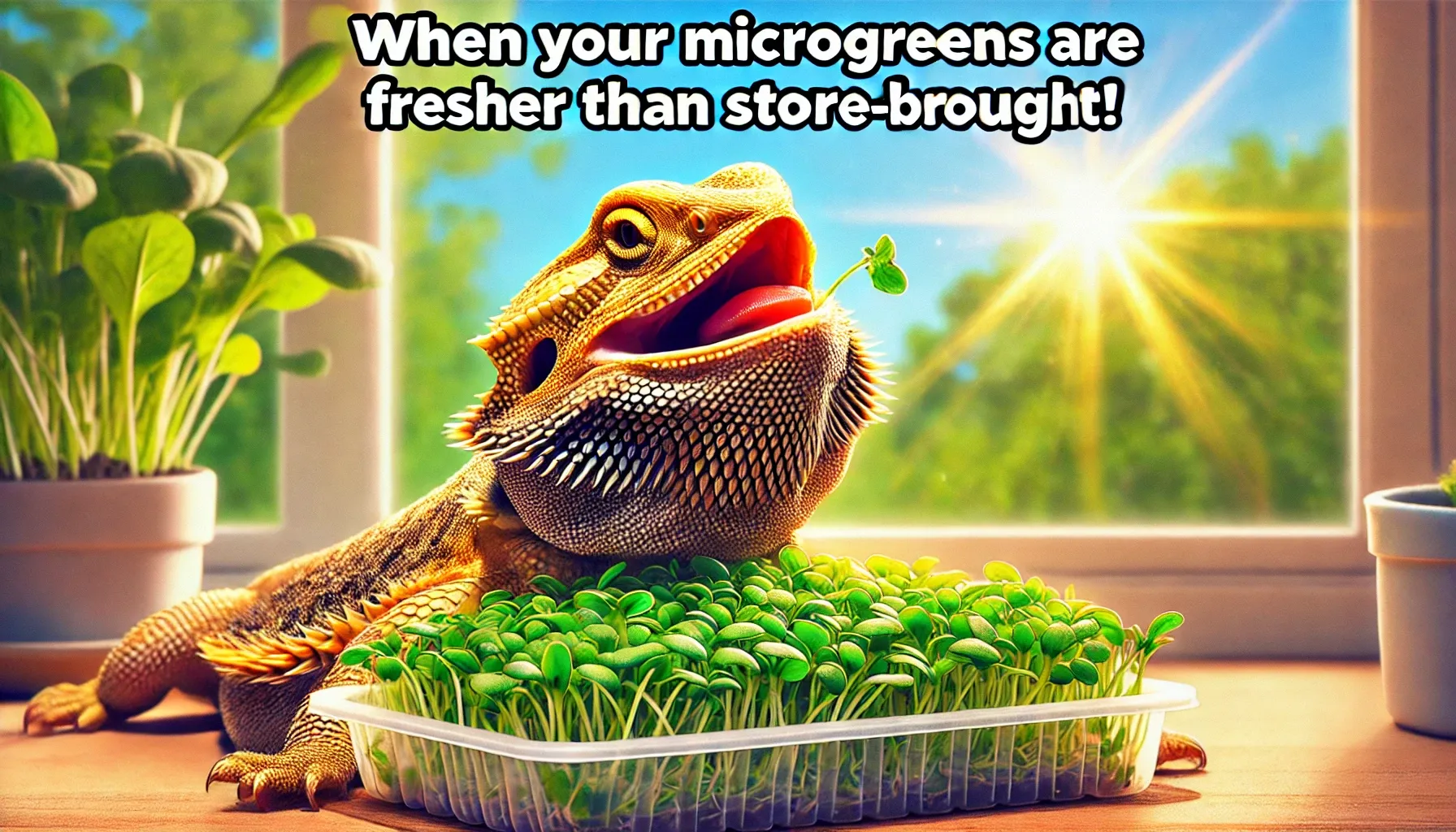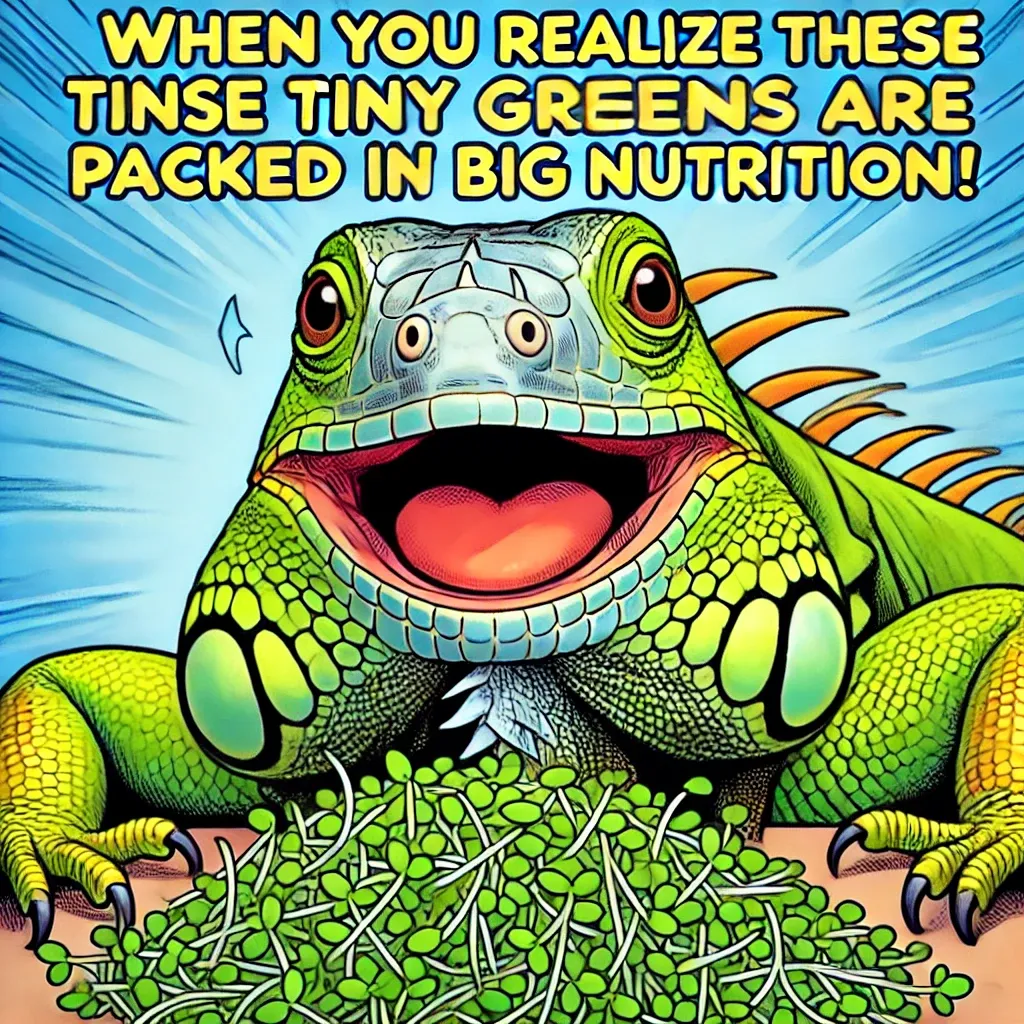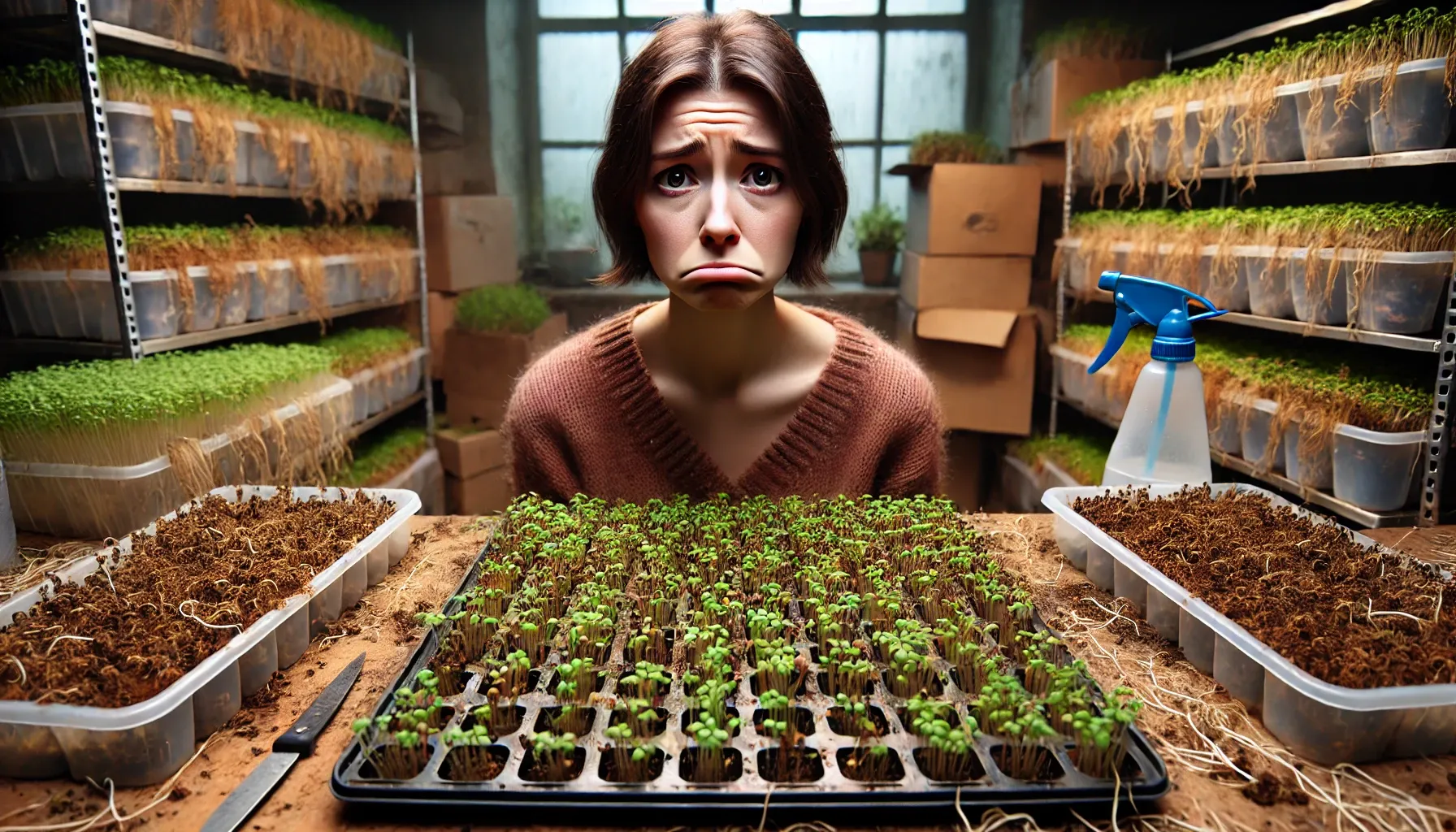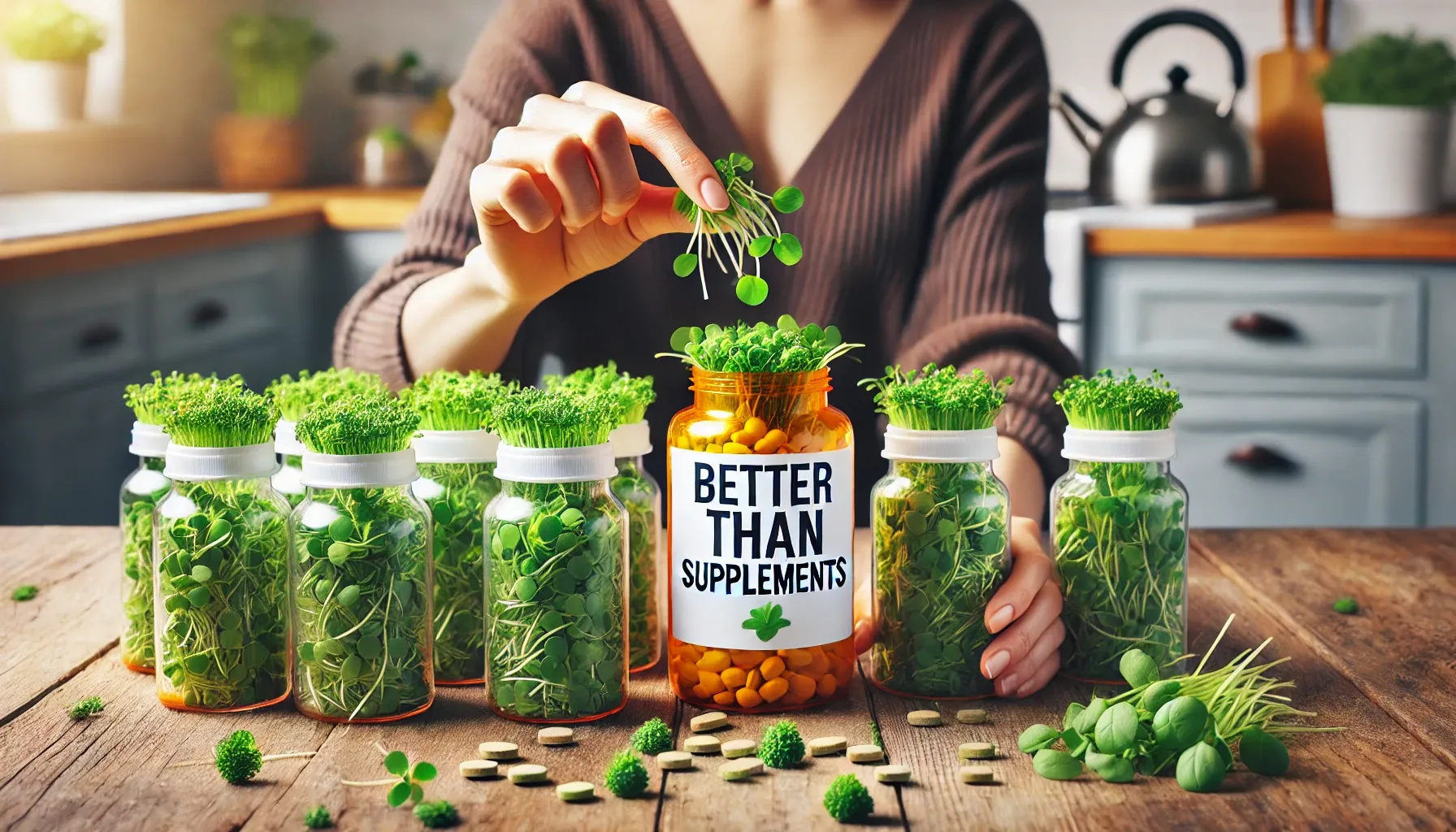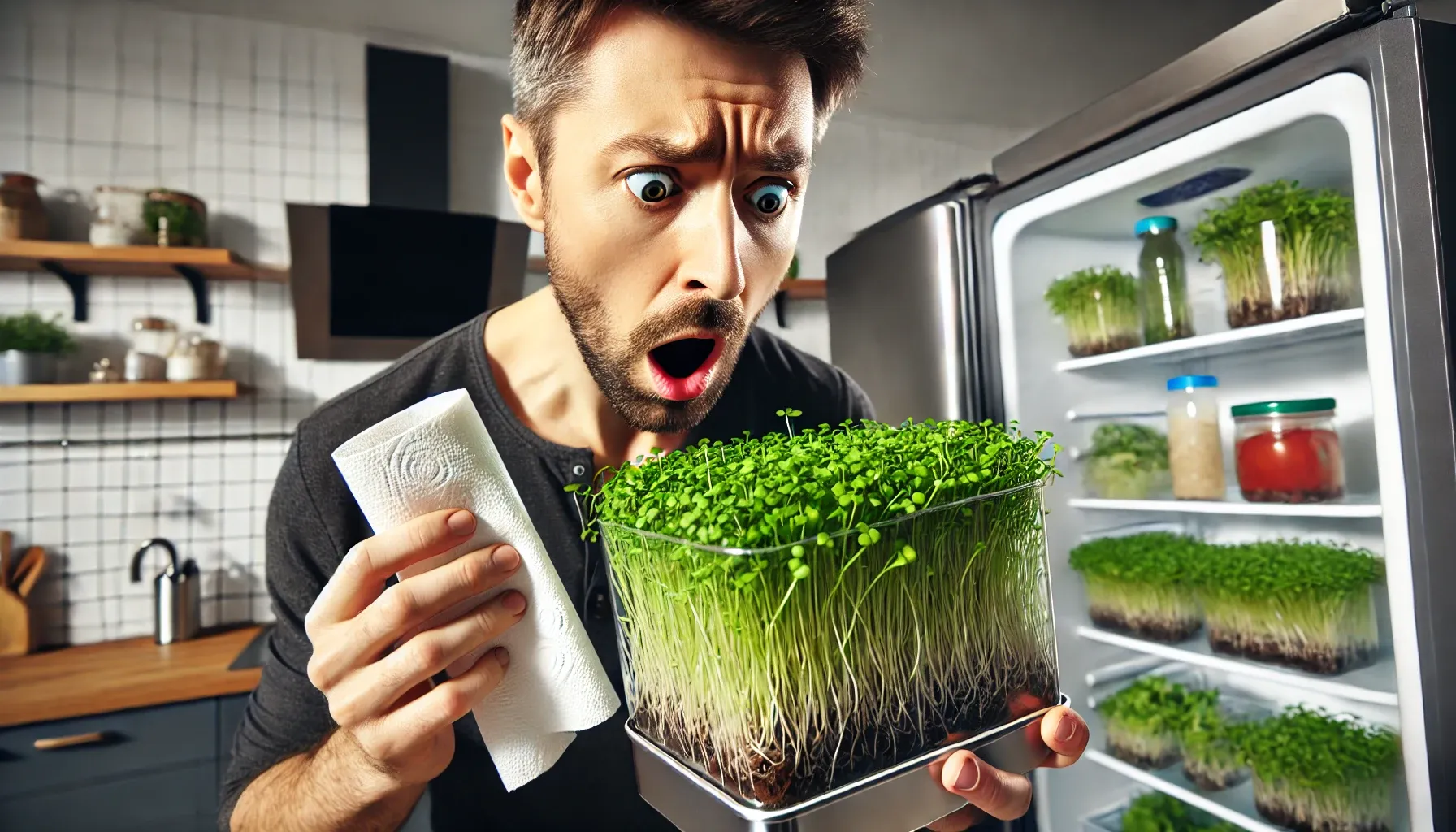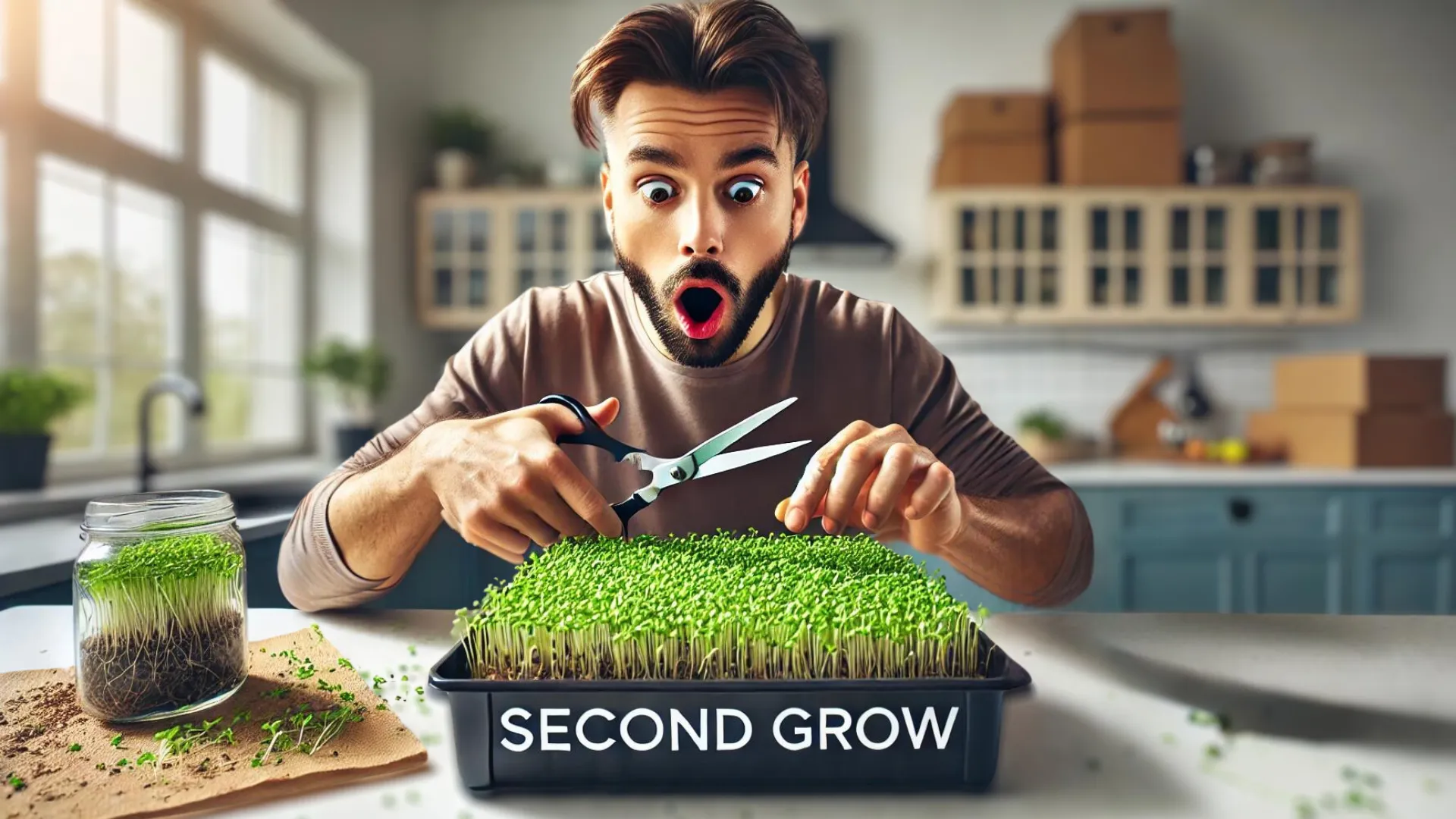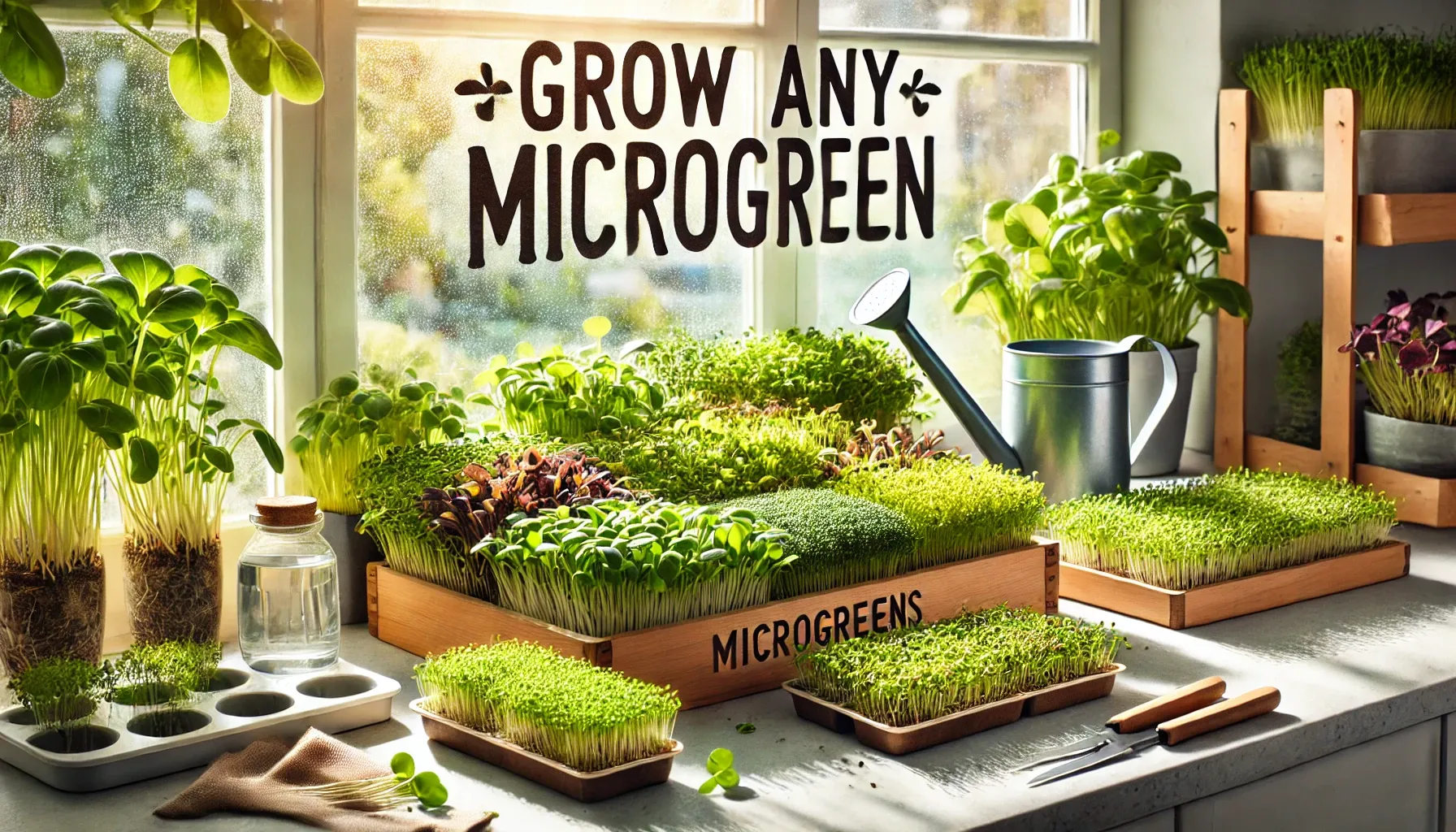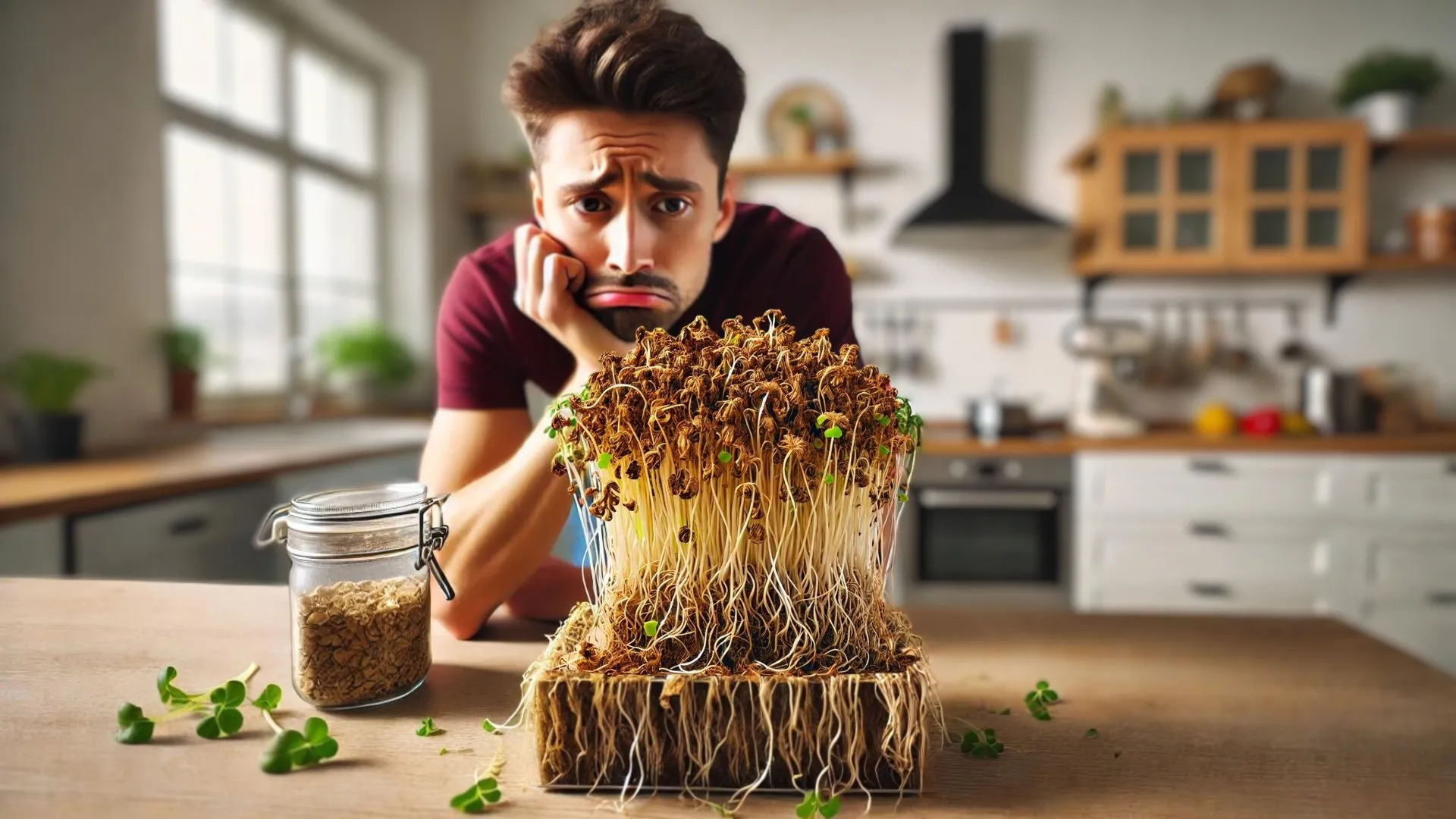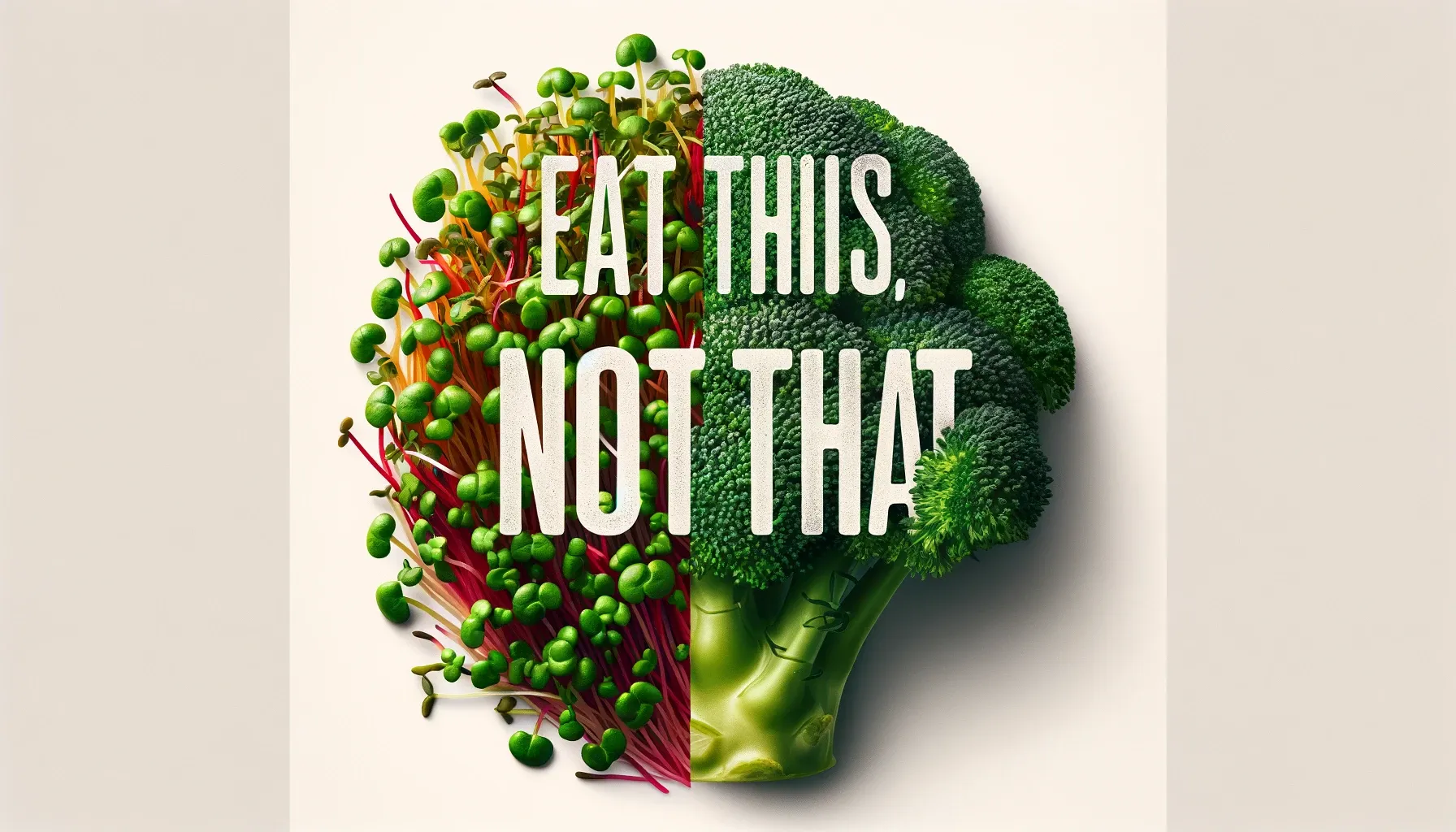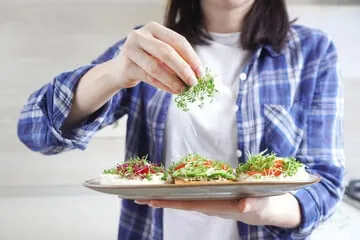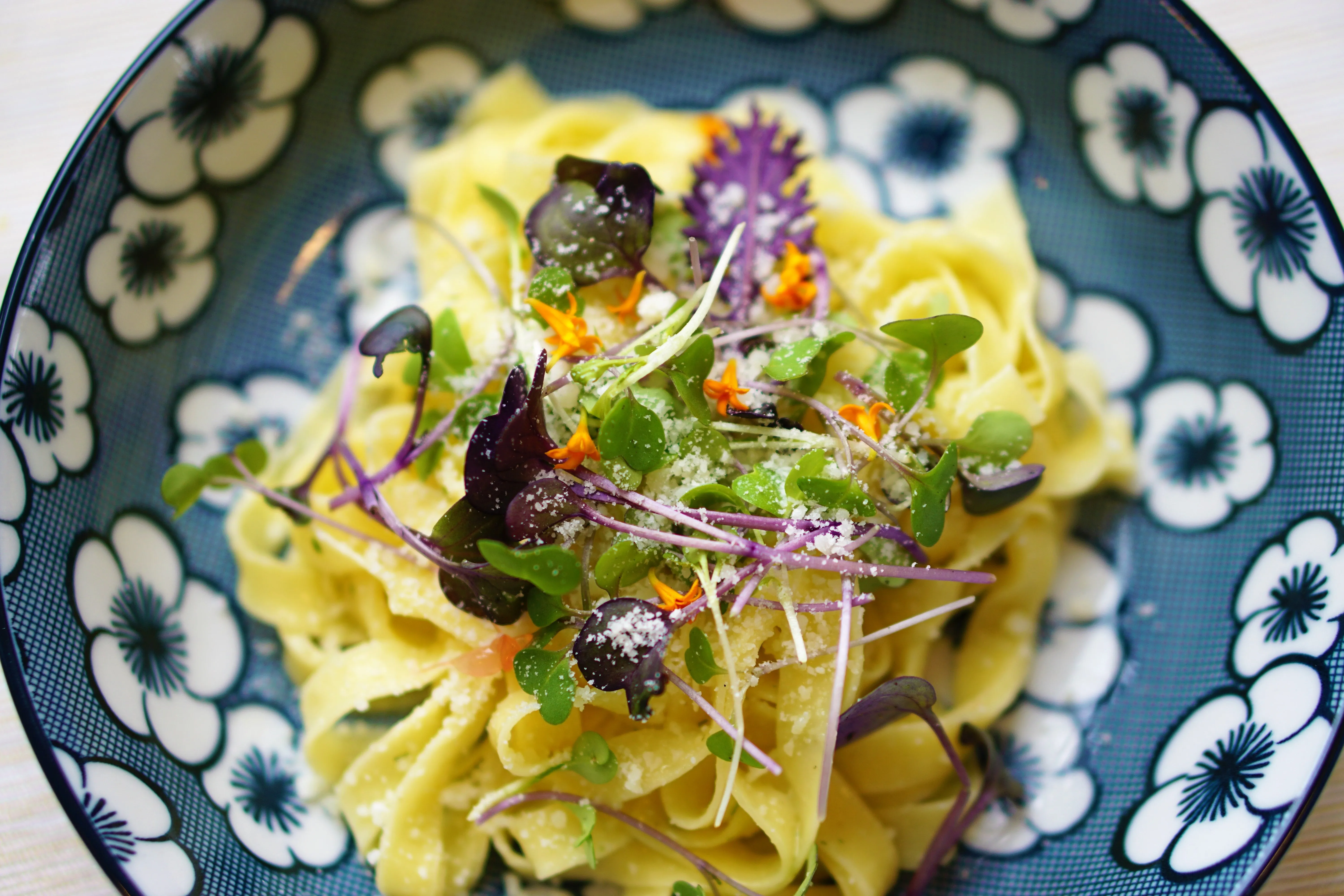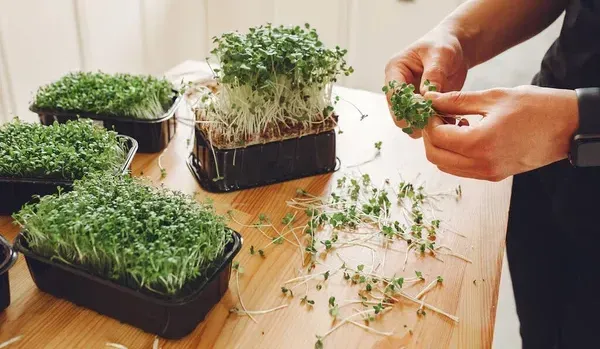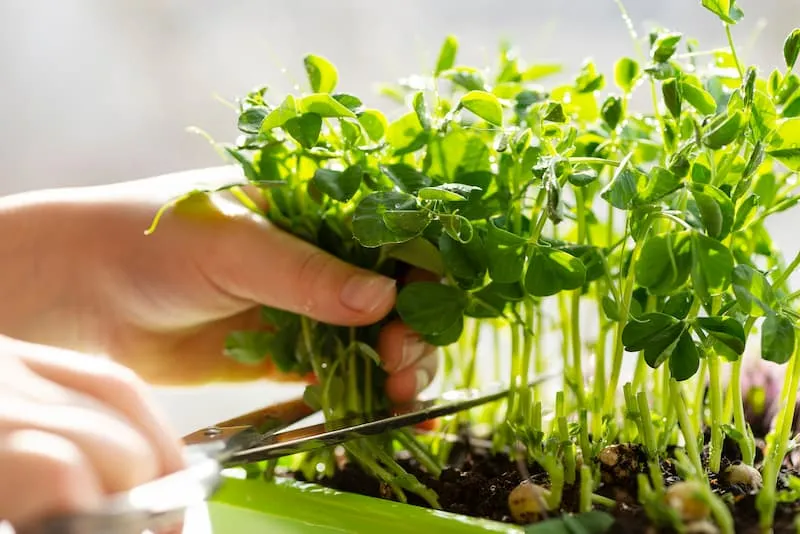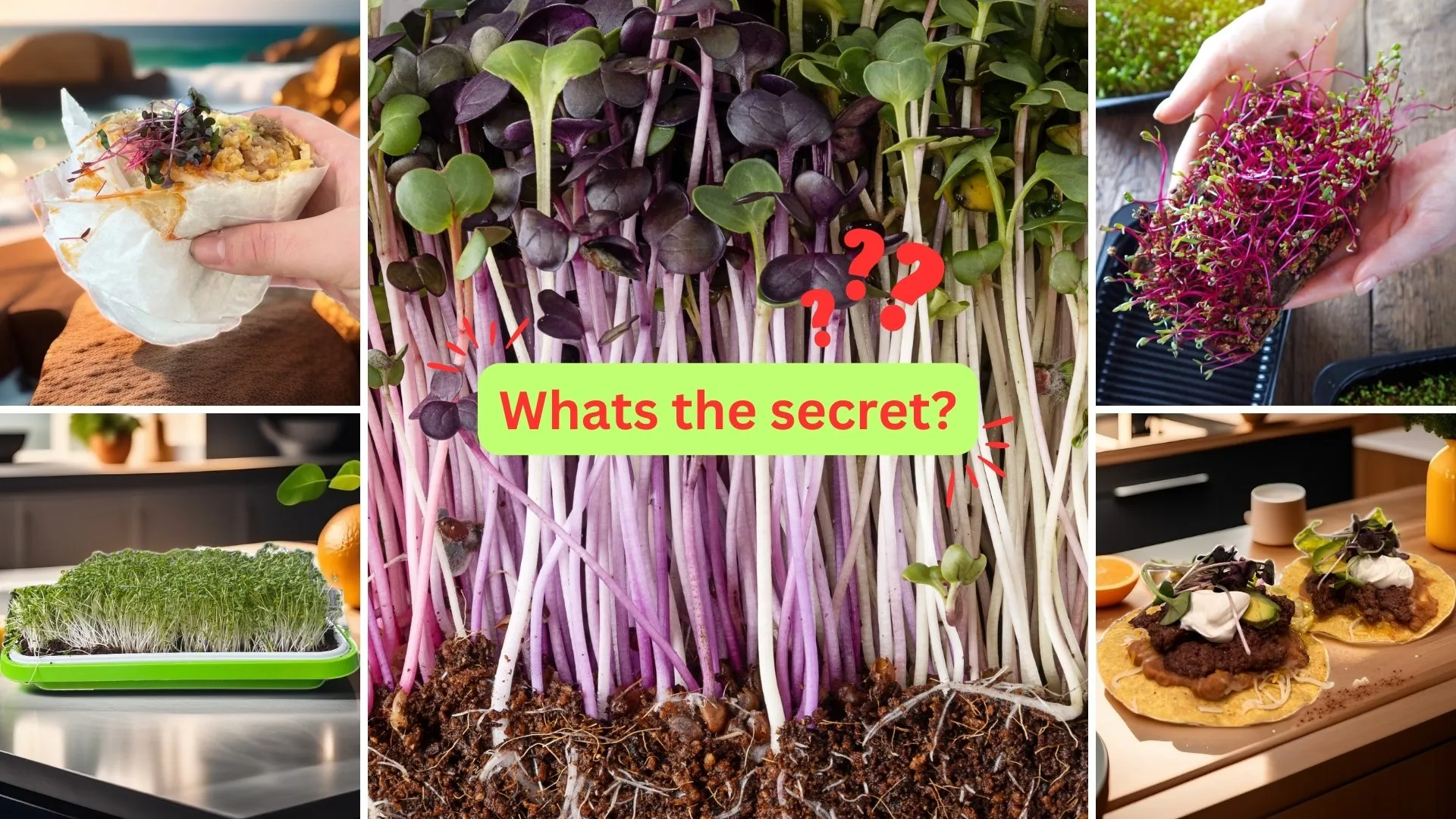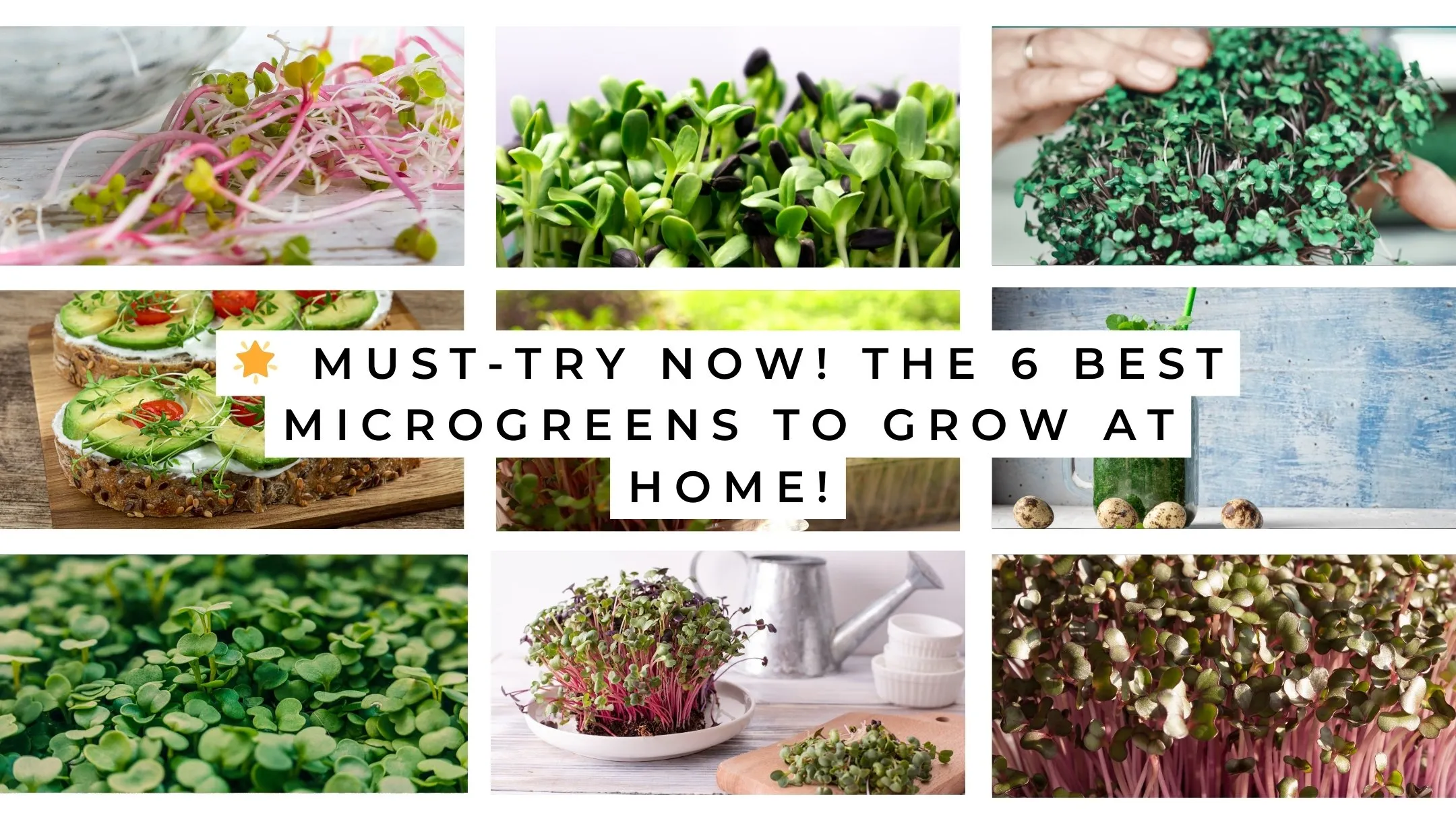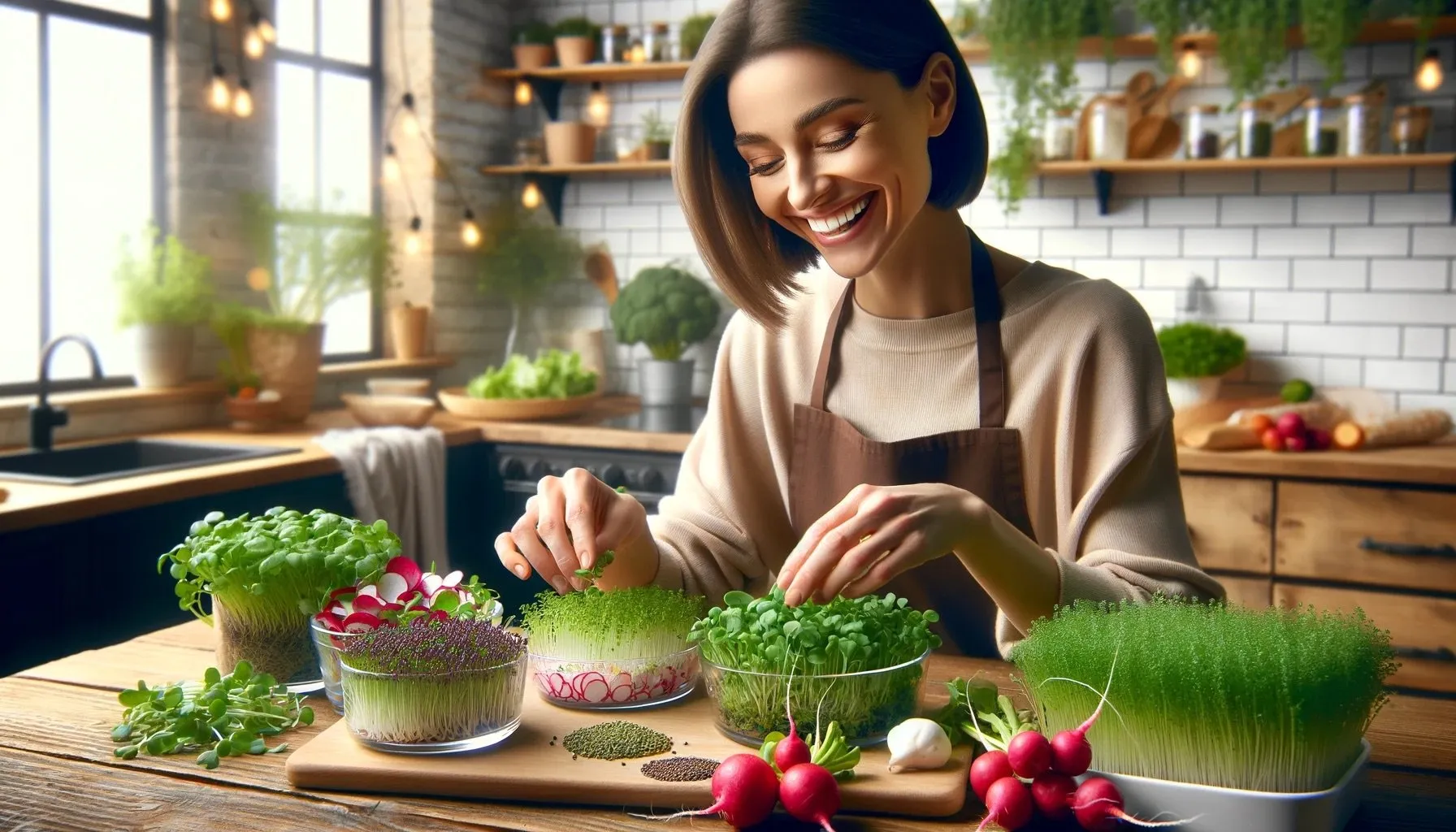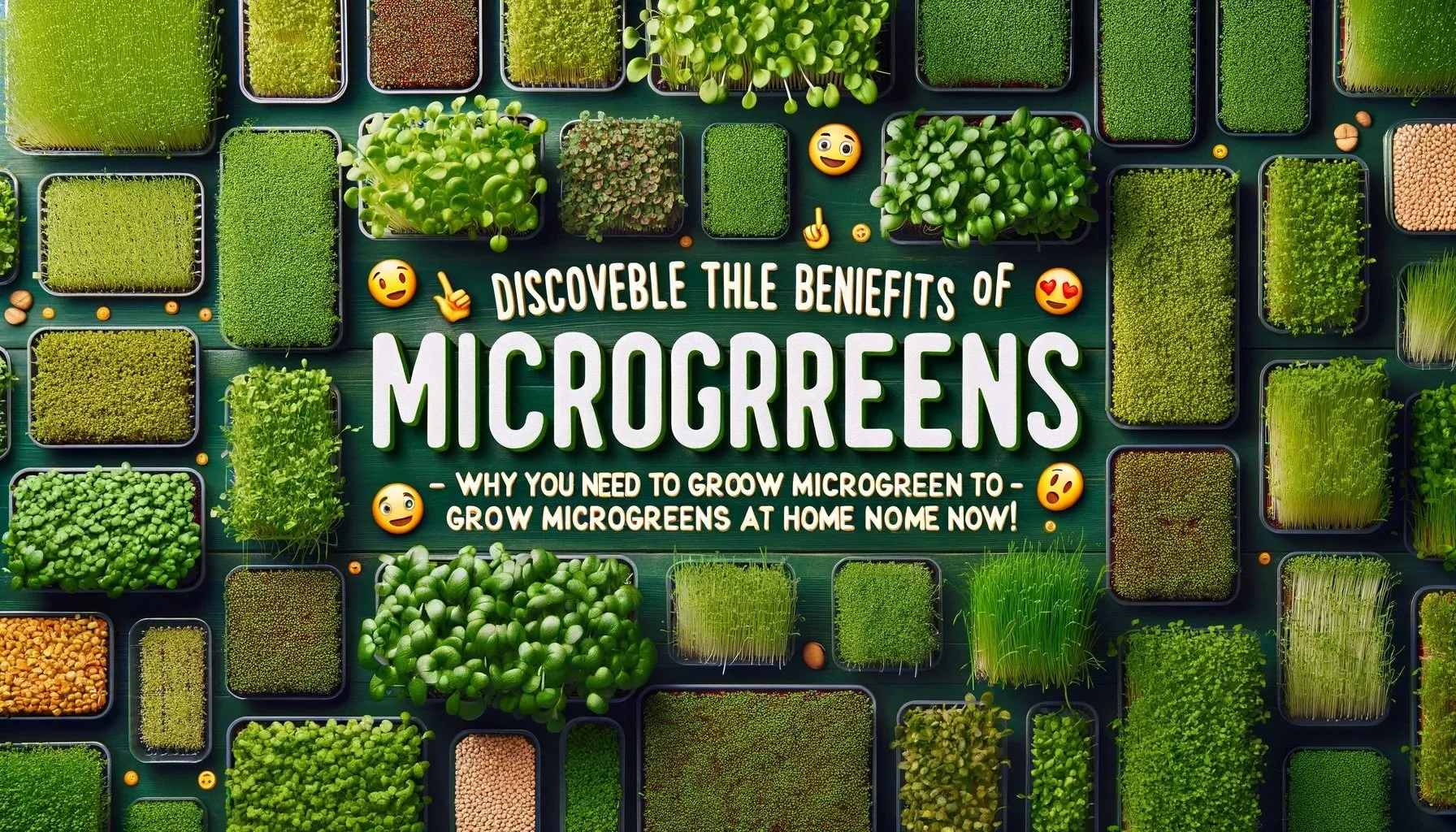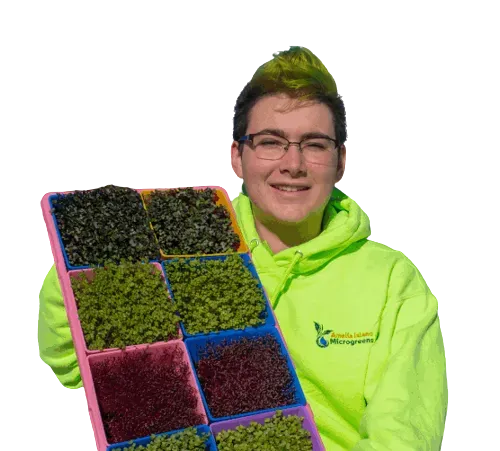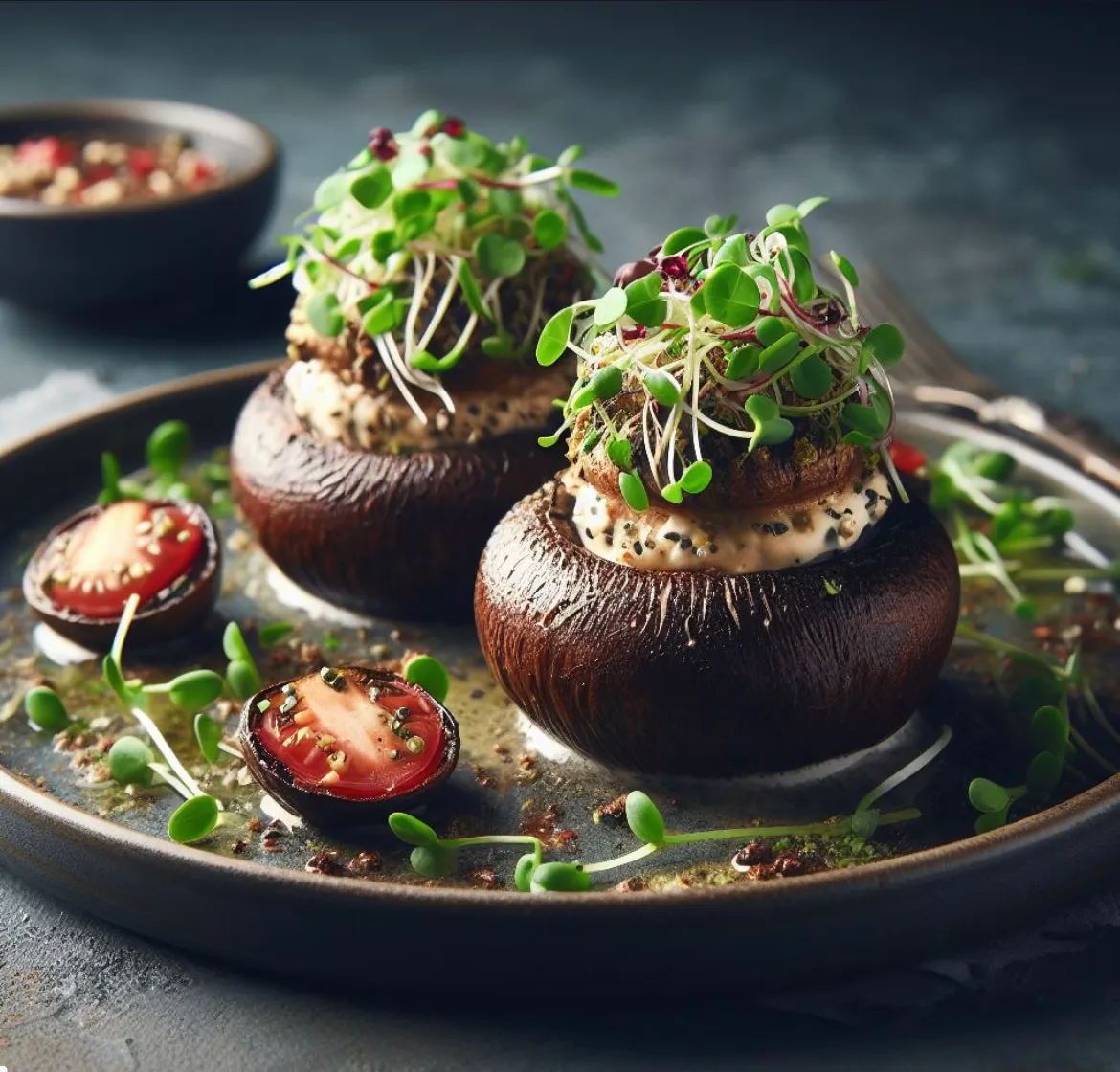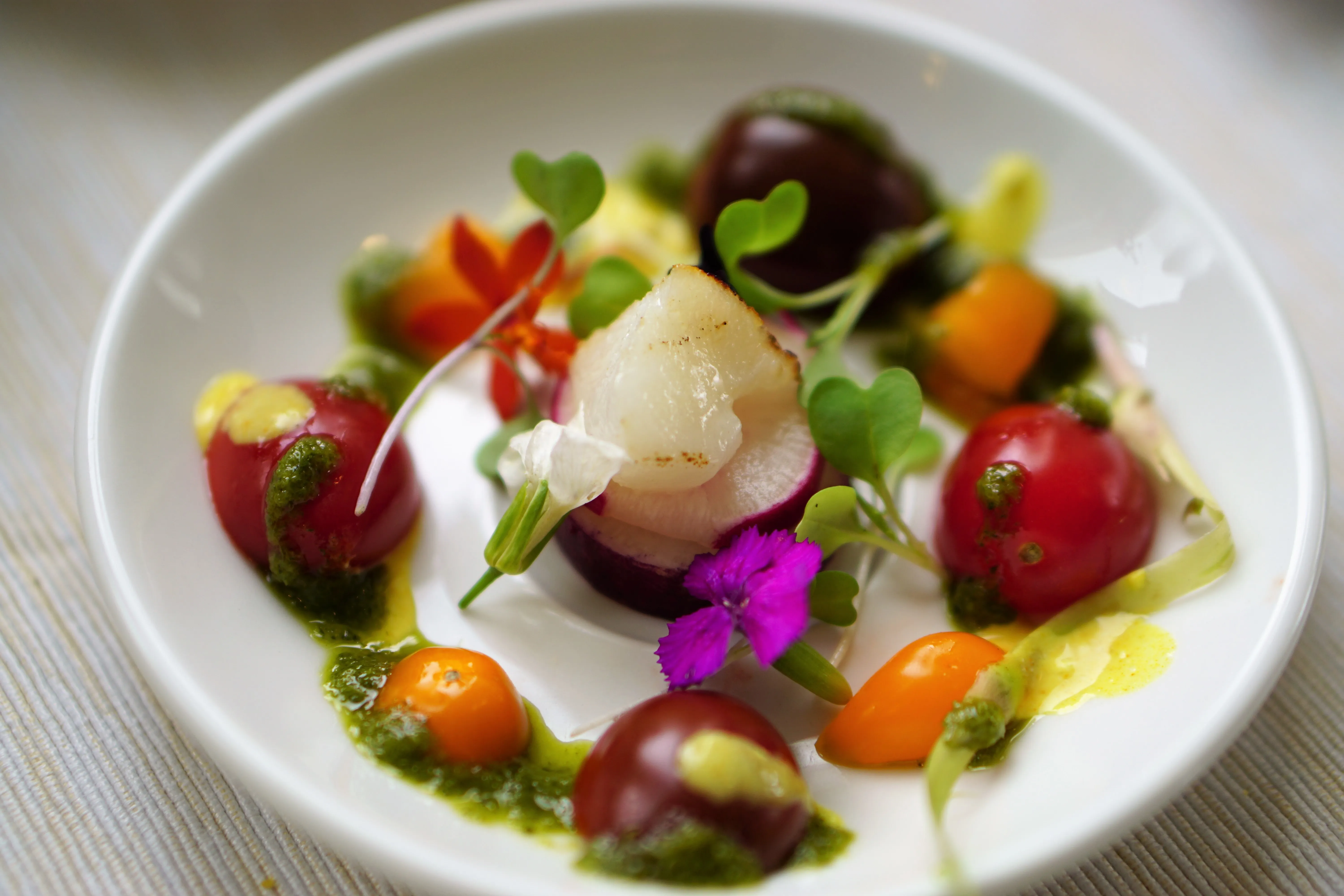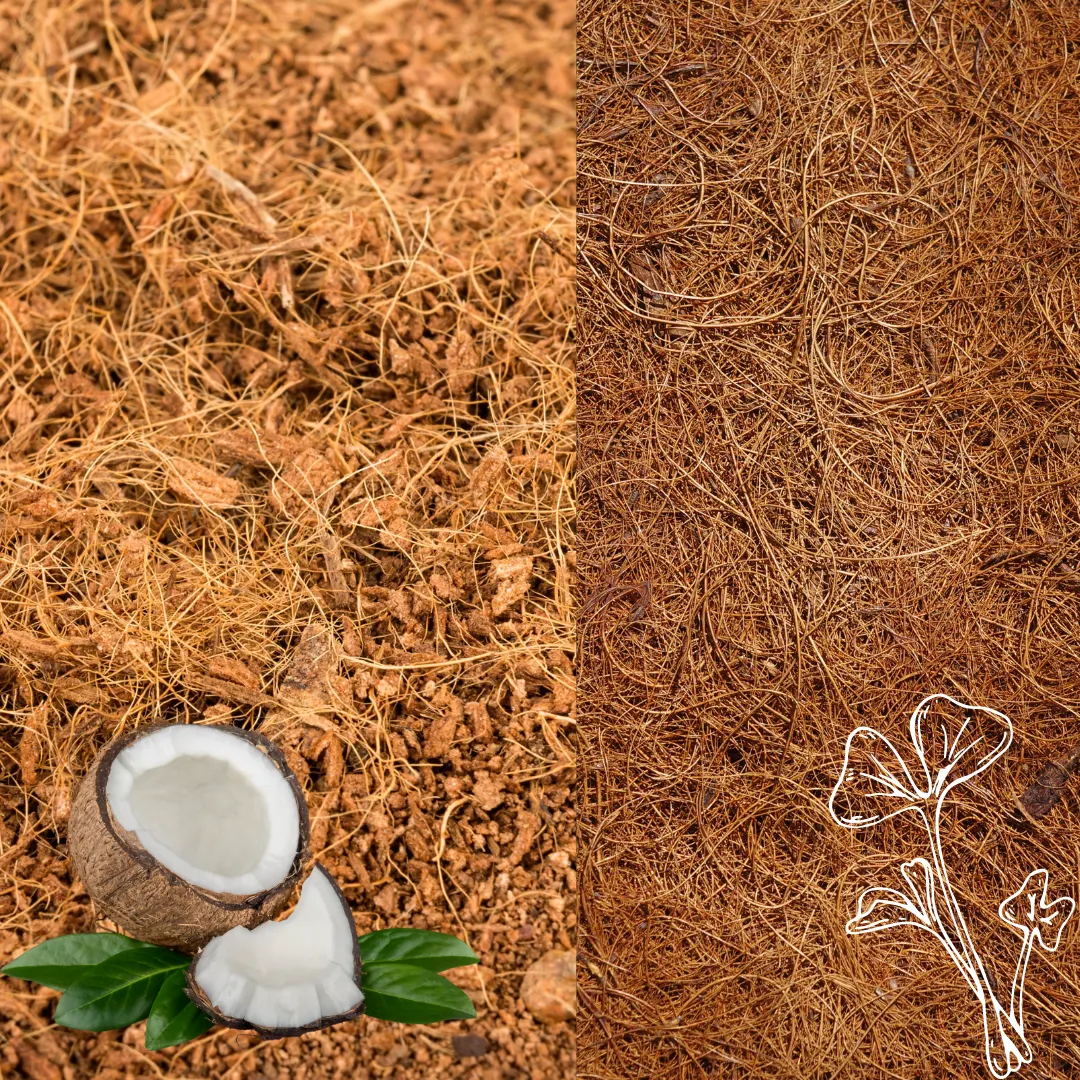7 Mouthwatering Microgreen Sandwiches That Will Ruin Regular Lettuce Forever
Let’s be honest, iceberg lettuce isn’t exactly thrilling. Sure, it adds crunch, but flavor? Nutrients? Not so much.
What if you could turn every sandwich into a flavor-packed, nutrient-rich experience that actually makes you excited to eat healthy? That’s exactly what Connor Hiebel, founder of Ameilia Island Microgreens, has been doing for 13+ years. And in his latest video, he shares 7 creative microgreen sandwich recipes that put plain lettuce to shame and even better, he drops his go-to sandwich hack that will keep your microgreens fresher longer while boosting flavor.
We’re talking about sandwiches your taste buds will write thank-you notes for. Whether you're a grilled cheese devotee or an avocado toast fan, there's something in this list that’s going to become your new favorite.
And yes, there’s bacon.
Ready to upgrade your sandwich game? Let’s dig in and don’t forget to watch the full video below, because that sandwich hack at the end is too good to miss.
👉
🎥 Make sure to stay till the end for Connor’s microgreen freshness hack... it’ll save you money and elevate every bite!
1. Spicy Microgreens BLT
Key Microgreens: Oriental Mustard or regular Mustard
Why it works: Spicy microgreens add a natural, bold kick—no sugary sauces required.
Ingredients: Bacon, tomato, sriracha mayo, mustard microgreens.
People literally ask Connor if he flavored these microgreens—nope, that’s just how good they taste.
\
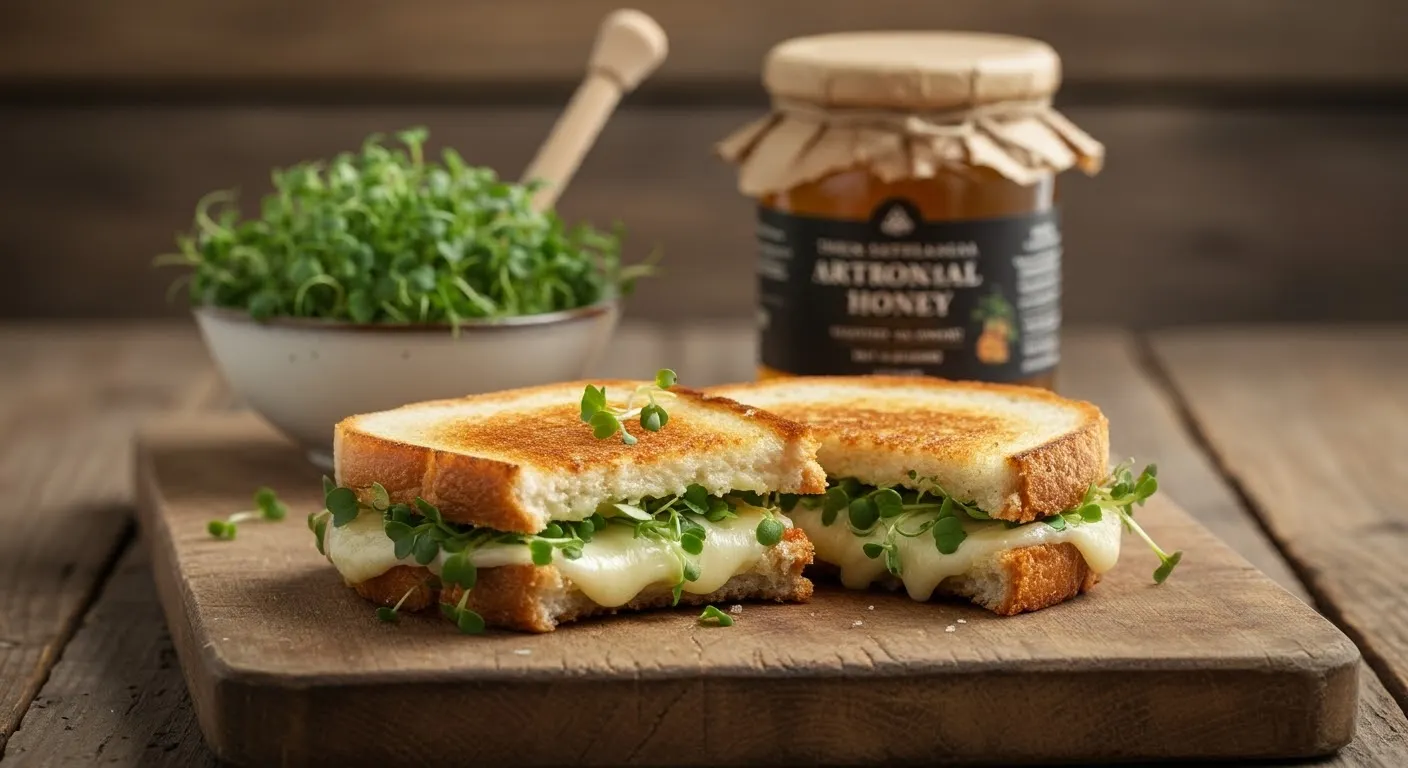
2. Microgreen Grilled Cheese – The Secret Kid Hack
Key Microgreens: Sunflower + Pea shoots
Why it works: You get the gooey cheese... plus the crisp, slightly nutty crunch of microgreens. Kids won’t even notice they’re eating greens!
Ingredients: Sharp cheddar, provolone, sourdough bread, toasted to perfection.
It’s a comforting classic that just got a serious upgrade—and a stealthy nutrition boost.
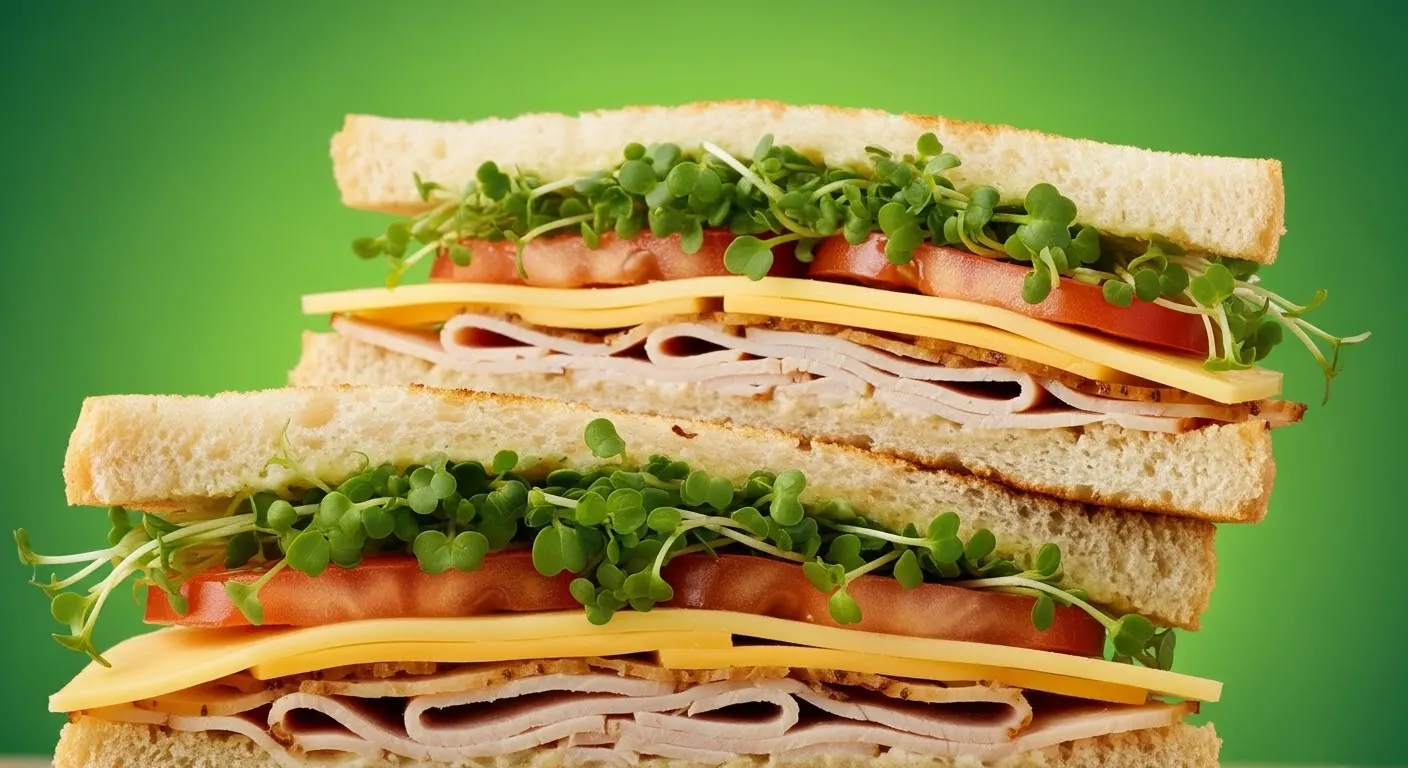
3. The Ultimate Turkey & Microgreen Club
Key Microgreens: Radish (peppery kick) or Pea shoots (crunchy + mellow)
Why it works: Microgreens elevate this sandwich with more flavor and crunch—and 40x the nutrients of lettuce.
Key Ingredients: Turkey, crispy bacon, avocado, tomato, garlic aioli, and a handful of vibrant microgreens.
The radish gives a spicy edge, while the pea shoots bring garden-fresh sweetness. Either way, you're miles ahead of basic greens.
4. Avocado & Microgreens Toasted Sandwich
Key Microgreens: Broccoli + Alfalfa
Why it works: The creaminess of avocado pairs perfectly with the crisp, mild microgreens.
Ingredients: Avocado, lemon, feta, olive oil, and of course, your greens.
It's like avocado toast grew up and went gourmet.
We want to take a moment to remind you that you don’t need a garden or a green thumb to grow your own fresh veggies. Our Amelia Island Microgreens Kit makes it easy to grow vibrant, nutrient-packed greens right on your kitchen counter, in just 7 days. It’s the same kit we use in these videos, and it includes everything you need to get started. If you're curious about growing your own food or want to make your meals even more flavorful and fresh, our kit is a great place to start. Learn more HERE. Welcome to a delicious way to grow something good. 🌿
5. Microgreen Pesto & Mozzarella Panini
Key Microgreens: Basil microgreens
Why it works: Insane flavor punch + basil microgreens are 40% more nutrient-dense than mature basil.
Ingredients: Microgreen pesto, roasted tomatoes, mozzarella, on sourdough grilled to perfection.
Even Italian chefs would be impressed and it smells amazing.
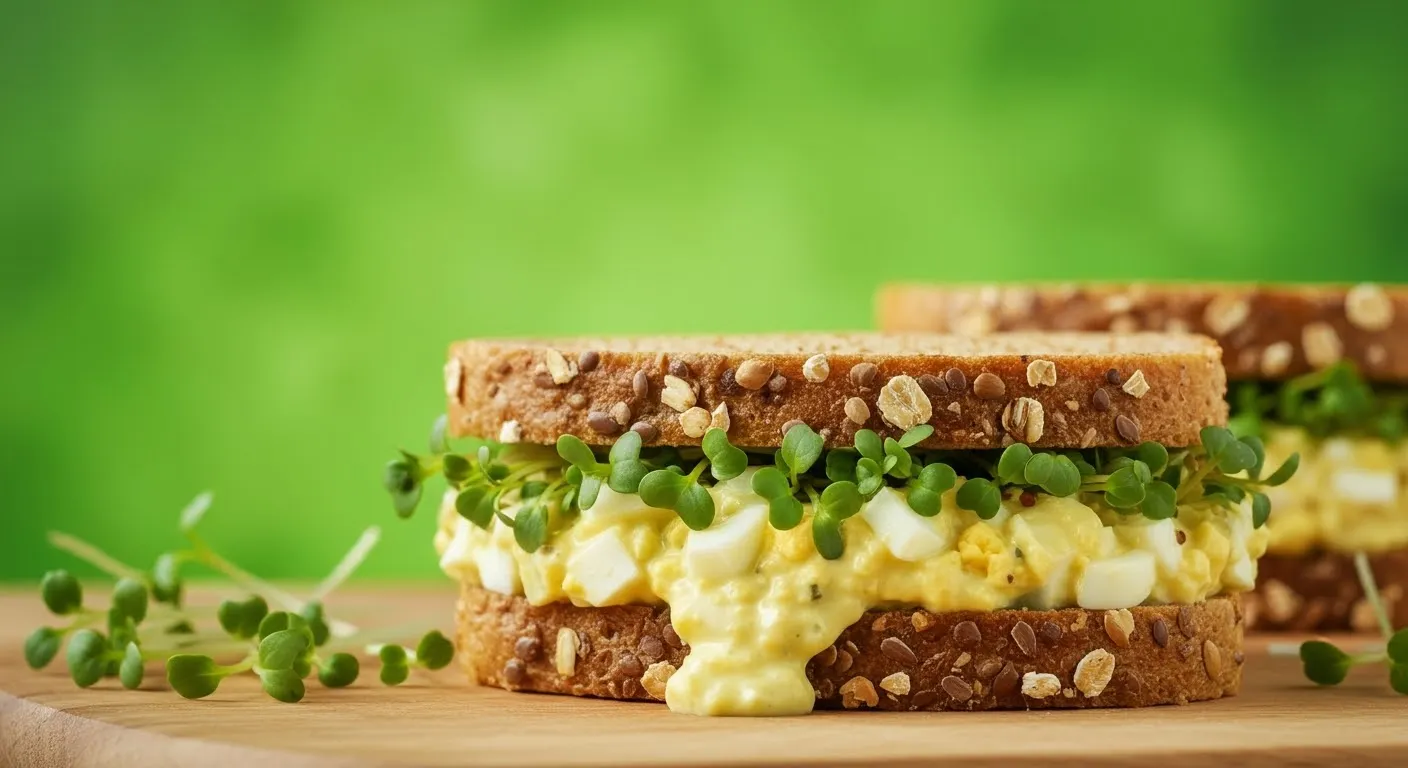
6. Egg Salad with Microgreens (aka The Healthy Crunch Hack)
Key Microgreens: Pea shoots (optional mustard microgreens for a twist)
Why it works: Adds healthy texture and crunch like chips, but better.
Ingredients: Hard-boiled eggs, mayo, salt, peashoots.
It’s the same cozy egg salad… only way more exciting (and healthy).
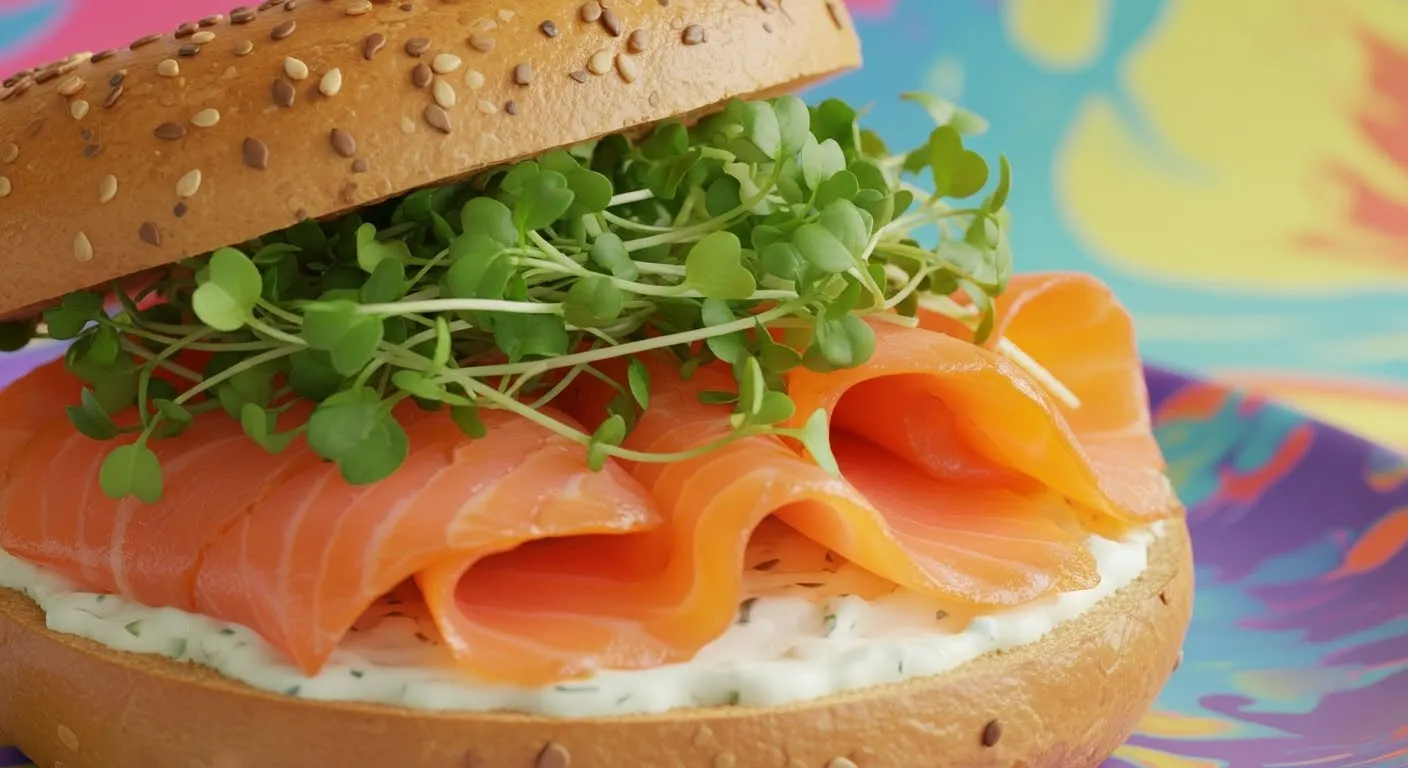
7. Smoked Salmon & Dill Microgreens Bagel
Key Microgreens: Dill
Why it works: Classic combo with a fresh, luxurious twist.
Ingredients: Cream cheese, smoked salmon, dill microgreens, capers, red onion, toasted bagel.
It’s brunch on another level and you’ll feel like you’re eating at a 5-star café.
🥪 Connor’s Go-To Microgreen Hack (Don’t Skip This!)
Want your microgreens to stay fresh up to 30 days? Here's the secret:
Let them keep growing until you're ready to eat, up to day 14. Then, harvest and store in a paper towel inside an airtight container in the fridge. This absorbs excess moisture and keeps them crispy and flavorful.
That’s two weeks growing + two weeks refrigerated = nearly one month of fresh greens on demand.
Watch the video above for the full walkthrough and demo.
💡 Ready to Grow Your Own Microgreens?
You don’t need a green thumb—you just need 7 days and Connor’s step-by-step help.
🎁 Join the FREE Microgreen Masterclass
Learn how to grow your own nutrient-packed microgreens at home (even in a tiny kitchen).
👉 AmeiliaIslandMicrogreens.com/101
It’s fun, fast, and ridiculously satisfying.
Sandwiches Will Never Be the Same Again
This video isn’t just a recipe round-up it’s a flavor revolution. Microgreens don’t just make your sandwiches healthier. They make them exciting again. Whether you're upgrading lunch for your kids, prepping a fancy brunch, or just trying to sneak in more nutrients, microgreens are the game-changer your kitchen has been missing.
And if you're wondering what other meals can I sneak microgreens into? Connor’s next video is packed with creative ways to use microgreens in soups, pastas, and beyond.
Until then, start with your sandwich. Start small. Then watch the magic happen.
💬 What’s Your Dream Microgreen Sandwich?
Drop a comment below and tell us:
Which microgreen are YOU most excited to try on your next sandwich?
Your ideas might inspire someone else to try something new—and yes, Connor reads every comment and might even feature yours in the next video.
🌱 Microgreen Recipes Q&A: Frequently Asked Questions
❓What can I make with microgreens?
You can use microgreens in salads, smoothies, sandwiches, soups, wraps, stir-fries, and even desserts. They're great raw or added as a garnish for an extra nutrient and flavor boost.
❓Are microgreens worth eating?
Yes, microgreens can contain up to 40% more nutrients than mature vegetables and are typically pesticide free. They’re rich in antioxidants, vitamins, and minerals.
❓How long do microgreens last?
Freshly harvested microgreens typically last 5–7 days in the refrigerator when stored in a dry, airtight container.
❓Do you eat microgreens raw or cooked?
Both! Most people eat them raw to preserve nutrients, but some heartier varieties like pea shoots or sunflower can be lightly sautéed.
❓How much is a tray of microgreens worth?
A tray can yield 6 ounces of microgreens, worth $5–15 depending on the variety and freshness.
❓What is the biggest benefit to microgreens?
Their nutrient density, microgreens are concentrated with vitamins C, E, K, beta-carotene, and other phytonutrients. Check out the video below to learn more
❓Can you eat microgreens like a salad?
Yes! Mix multiple varieties to create a fresh, peppery, and colorful salad.
❓Can I eat microgreens instead of vegetables?
Microgreens can complement vegetables but shouldn't entirely replace them. They’re nutrient-rich but offer less fiber due to their small size.
❓How to eat microgreens for breakfast?
Add them to scrambled eggs, avocado toast, smoothies, yogurt bowls, or as a garnish on oatmeal or breakfast wraps.
❓How much microgreens to eat per day?
A small handful (about ¼ cup) daily is a great way to boost nutrition. P.S. You can eat more if you want 🥳
❓Why do chefs like microgreens?
Chefs love microgreens for their intense flavor, visual appeal, and freshness. They elevate the presentation and nutrition of a dish.
❓Does cooking microgreens destroy nutrients?
Yes, heat can reduce some nutrient levels. That’s why microgreens are usually eaten raw or added at the end of cooking. Watch this video to learn more:
❓What microgreens taste the best?
Sunflower (nutty), pea shoots (sweet), radish (spicy), and broccoli (mild) are popular for both taste and nutrition. Our most popular is wasabi Microgreens (spicy).
❗ What is a possible downside to microgreens?
❓When should you not eat microgreens?
Avoid microgreens that are slimy, smell bad, or show signs of mold. Always store them properly and handle them with clean hands.
❓Why do you blackout microgreens?
“Blackout” or dark periods help microgreens stretch and root before they turn green. This process supports stronger growth.
❓Can I eat too many microgreens?
While rare, overconsumption of some varieties (like mustard or radish) may cause stomach discomfort. Stick to moderate daily servings.
❓What do microgreens taste like?
Each variety is different: radish is spicy, basil is aromatic, sunflower is nutty, and kale is earthy.
❓Are microgreens inflammatory?
No, most microgreens are anti-inflammatory, especially broccoli, red cabbage, and cilantro microgreens.
❓Are microgreens actually healthier?
Yes. Studies show they contain significantly higher levels of key nutrients compared to their mature counterparts.
❓Are homegrown microgreens safe to eat?
Yes, when grown and harvested in clean conditions. Use food-safe trays, clean water, and organic seeds when possible.
❓Do microgreens attract bugs?
Not typically indoors. However, if grown outside, aphids and gnats may be attracted to damp conditions.
❓What is the most nutritious microgreen?
Broccoli microgreens consistently top the charts for sulforaphane, an antioxidant linked to cause cancer cells to apoptosize (self destruct).
❓How long will microgreens last?
Stored correctly, 5–7 days in the fridge. Harvest only what you need to extend their shelf life.
❓What happens if I let microgreens keep growing?
They will grow taller, get leggier, and may become bitter or fibrous. Microgreens are best harvested young.
❓When to remove weight from microgreens?
Typically 3–4 days after sowing. The weight helps with germination and root anchoring.
✅ What is the best way to eat microgreens?
❓Is it safe to eat microgreens every day?
Yes, and it’s recommended by many nutritionists. Variety is key for a well-rounded nutrient intake.
❓Should you wash microgreens before eating?
Yes. Even when homegrown, a gentle rinse removes seed hulls and ensures cleanliness.
❓Is it better to eat microgreens raw or cooked?
Raw retains the most nutrients, but sturdy types like sunflower or pea can be lightly cooked.
❓Do you have to rinse microgreens?
Yes, especially if grown in soil. Hydroponic greens may be cleaner but still benefit from a rinse.
❓Can you eat microgreens like a salad?
Absolutely. Mix with olive oil, lemon juice, and toppings for a nutrient-rich salad.
❓What microgreens taste the best?
Pea shoots, sunflower, and radish are common favorites due to their sweet or spicy profiles.
❓Are microgreens better than salad?
Nutrient-wise, yes! Microgreens are more concentrated in antioxidants, though salad greens offer more fiber.
❓Do you eat the stems of microgreens?
Yes, you eat the entire sprout, leaf, stem, and all.
❓Are microgreens better for you than spinach?
In some ways, yes. Broccoli microgreens, for example, may have more sulforaphane than mature broccoli or spinach.
❓How do chefs use microgreens?
As garnishes, toppings, or mix-ins to add texture, color, and a pop of flavor to dishes.
❓What do microgreens taste like?
Flavors range from spicy (mustard, radish) to sweet (pea, basil) and nutty (sunflower). Each adds a unique flavor punch.
🌿 Do microgreens grow back after cutting?
❓Can I reuse soil after growing microgreens?
No, If you reuse soil after growing microgreens, you will create an unsterile environment full of bacteria and potential mold spores. We want a clean environment, so get fresh soil each time. Our seed refills come with the seed and soil. The exception to this is soil free grow mats, those you can reuse after a good cleaning.
❓How much microgreens to eat per day?
About a handful, or ¼ cup, is a healthy serving for daily nutrition.
❓What happens if I don’t harvest my microgreens?
They become leggy, fibrous, and may flower or become bitter, past their prime for eating.
❓Do you eat the roots of microgreens?
Not typically, If you use a grow medium like coco coir, then the roots will be covered in soil. You can wash the soil off and eat them or just harvest above the soil line or grow mat and feed the roots to chickens or throw them in your garden.
❓Do you need to wash microgreens after harvesting?
Yes. A light rinse ensures they're clean and safe to eat, especially if grown in soil.
❓How long do microgreens take to cut?
Just a few minutes! Use scissors or a sharp knife and snip just above the soil.
❓How do you harvest microgreens so they keep growing?
Most don’t regrow after cutting. However, pea shoots and some herbs may regrow once.
❓Are microgreens good for you?
Yes! They're loaded with nutrients and antioxidants that support overall health.
❓What are the disadvantages of microgreens?
They’re delicate, spoil quickly (when store bought), and don’t provide much fiber. Some varieties may also taste bitter to some.
❓Are microgreen seeds the same as regular seeds?
Yes, but it’s best to buy seeds labeled for microgreens to ensure high germination and safety standards. Make sure your seeds are pathogen tested to make sure theres no E-coli or semolina risk.
❓How do you know when microgreens are ready to harvest?
Usually 7–10 days after planting, once the first true leaves appear and they’re 1–3 inches tall.
❓What are the best microgreens to grow indoors?
Broccoli, radish, sunflower, and pea shoots they grow quickly, require minimal light, and are packed with flavor.

